

What is a PhD?
- Types of Doctorates
- A Doctor of Philosophy (PhD) is the highest globally recognized postgraduate degree that higher education institutions can award.
- PhDs are awarded to candidates who undertake original and extensive research in a particular field of study.
- Full time PhD programmes typically last three to four years, whilst part time PhD programmes typically last six to seven years.
- A PhD can lead to an academia teaching role or a career in research. A PhD can also equip you with skills suitable for a wide range of jobs unrelated to your research topic or academia.
Definition of a PhD – A Doctor of Philosophy (commonly abbreviated to PhD , Ph.D or a DPhil ) is a university research degree awarded from across a broad range of academic disciplines; in most countries, it is a terminal degree, i.e. the highest academic degree possible.
PhDs differ from undergraduate and master’s degrees in that PhDs are entirely research-based rather than involving taught modules (although doctoral training centres (DTCs) offer programmes that start with a year of lecture-based teaching to help develop your research skills prior to starting your project).
In most English-speaking countries, those that complete a PhD use the title “Doctor” (typically abbreviated to Dr) in front of their names and are referred to as such within academic and/or research settings. Those that work in fields outside of academia may decide not to use the formal doctor title but use post-nominal letters (e.g. John Smith PhD); it’s unusual though for someone to use both the Doctor title and post-nominal letters in their name.
PhD vs Doctorate
A PhD and a professional doctorate are both research-based terminal degrees.
However, where a PhD focuses on original research mostly around theoretical concepts, a professional doctorate focuses on examining existing knowledge to solve real-life, practical problems.
While there is much crossover between the two, a PhD is generally better suited for an individual to wants to advance the knowledge and understanding in their field, and a professional doctorate degree is better suited to a working professional who wants to better be able to apply knowledge and understanding to their field.
What Are the Entry Requirements for a PhD?
To be accepted on to a PhD programme, students usually need to hold at least a high ( 2:1 and above ) undergraduate degree that is related to the field of research that they want to pursue. A PhD candidate may also be expected to hold a Master’s degree , however, this does not mean you must have one, as it is still possible to enrol into a PhD without a Master’s .
Self-funded courses may sometimes be more relaxed in relation to entry requirements. It may be possible to be accepted onto a self-funded PhD programme with lower grades, though these students typically demonstrate their suitability for the role through professional work experience.
Whilst a distance learning project is possible , most PhD candidates will carry out their research over at least three years based at their university, with regular contact with two academic supervisors (primary and secondary). This is particularly the case for lab-based projects, however, some PhD projects require spending time on-site away from university (e.g. at a specialist research lab or at a collaborating institution abroad).
How Long Does a PhD Take?
Typically, full-time PhDs last 3-4 years and part-time PhDs last 6-7 years. However, at the discretion of the university, the thesis writing-up period can be extended by up to four years.
Although most doctoral programmes start in September or October, they are generally much more flexible than taught-courses and can start at any time of the year.
How Much Does a PhD Cost?
Tuition fees for UK and EU students vary between £3,000 and £6,000 per year, with the average tuition fee of £4,712 per year for 2023/24 programmes.
Tuition fees increase considerably for international students, varying between £16,000 to £25,000 per year, with an average tuition fee of £19,600 per year .
Nonetheless, most students will secure PhD funding in the form of studentships, scholarships and bursaries to help pay for these fees. These funding opportunities can either be partial, which cover tuition fees only, or full, which cover both tuition fees and living expenses.
UK national students can also apply for Doctoral Loans from Student Finance England if they are unable to secure funding.
Finding a PhD has never been this easy – search for a PhD by keyword, location or academic area of interest.
What Does a PhD Involve?
To be awarded a PhD, a doctoral student is required to produce a substantial body of work that adds new knowledge to their chosen field.
A PhD programme will typically involve four key stages:
Stage 1: Literature Review
The first year of a PhD involves attending regular meetings with your supervisors and carrying out a search on previously published work in your subject area. This search will be used to produce a literature review which should set the context of the project by explaining the foundation of what is currently known within the field of research, what recent developments have occurred, and where the gaps in knowledge are. In most cases, this will be an extension of your research proposal should you have produced one as part of your application. The literature review should conclude by outlining the overarching aims and objectives of the research project. This stage of setting achievable goals which are original and contribute to the field of research is an essential first step in a successful PhD.
The supervisor is the main point of contact through the duration of a PhD – but remember: they are there to mentor, not to teach, or do it for you . It will be your responsibility to plan, execute and monitor your own work as well as to identify gaps in your own knowledge and address them.
Stage 2: Research
The second year (and prehapse some of your third year) is when you work on your research. Having identified novel research questions from your review of the literature, this is where you collect your data to help answer these questions. How you do this will depend on the nature of your doctoral research: for example, you may design and run experiments in a lab alongside other PhD students or visit excavation sites in remote regions of the world. You should check in regularly with your supervisors to update them and run any ideas or issues past them.
Have the structure and chapters of your thesis in mind as you develop and tackle your research questions. Working with a view of publishing your work will be very valuable later on.
Stage 3: Write up of Thesis
The next key stage of a PhD is writing a doctoral thesis , which typically takes from anywhere between three months to one year. A thesis is a substantial body of work that describes the work and outcomes of the research over the previous two to three years. It should tell a detailed story of the PhD project – focusing on:
- The motivations for the research questions identified from the literature review.
- The methodologies used, results obtained, and a comprehensive analysis and discussion of the findings.
- A detailed discussion of the key findings with an emphasis on the original contributions made to your field of research and how this has been impactful.
There is no universal rule for the length of a PhD thesis, but general guidelines set the word count between 80,000 to 100,000 words.
For your thesis to be successful, it needs to adequately defend your argument and provide a unique or increased insight into your field that was not previously available.
Stage 4: Attending the Viva
A viva voce , most commonly referred to as just a ‘ viva ‘, is an interview-style examination where the PhD student is required to engage in a critical appraisal of their work and defend their thesis against at least two examiners. The examiners will ask questions to check the PhD student has an in-depth understanding of the ideas and theories proposed in their thesis, and whether they have developed the research skills that would be expected of them.
The viva is one of the final steps in achieving a PhD, and typically lasts at least two hours, but this duration can vary depending on the examiners, the university and the PhD project itself.
Once you have done the viva – you’re on the home stretch. You will typically be asked to make some amendments to your thesis based on the examiner’s feedback. You are then ready to submit your final thesis for either:
- PhD – If you pass the requirements you will be awarded a PhD degree (most common outcome),
- MPhil – If you failed to meet requirements for a PhD, you may be downgraded to an MPhil degree (uncommon outcome),
- Fail – No award is given, typically for cases of plagiarism (extremely uncommon outcome).
What Is It Like to Undertake a PhD?
We’re often asked what it is like to undertake a PhD study. Unfortunately, this isn’t a simple answer to this question as every research project is different.
To help give insight into the life of a PhD student, we’ve interviewed PhD students at various stages of their programmes and put together a series of PhD Student Interviews . Check out the link to find out what a PhD is like and what advice they have to offer you.
What Are the Benefits of A PhD?
A PhD is the highest globally recognised postgraduate degree that higher education institutions can award. The degree, which is awarded to candidates who demonstrate original and independent research in a particular field of study, is not only invaluable in itself, but sets you up with invaluable skills and traits.
Career Opportunities
First, a PhD prepares you for a career in academia if you wish to continue in this area. This takes form as a career in the Higher Education sector, typically as a lecturer working their way to becoming a professor leading research on the subject you’ve studied and trained in.
Second, a PhD also enables the opportunity for landing a job in a research & development role outside of the academic environment. Examples of this include laboratory work for a private or third sector company, a governmental role and research for commercial and industrial applications.
Transferable Skills
Finally, in possessing a PhD degree, you can show to employers that you have vital skills that make you an asset to any company. Three examples of the transferable skills that you gain through a PhD are effective communication, time management, and report writing.
- Communication – presenting your work in written and oral forms using journal papers and podium presentations, shows your ability to share complex ideas effectively and to those with less background knowledge than you. Communication is key in the professional environment, regardless of the job.
- Time management – The ability to prioritise and organise tasks is a tremendous asset in the professional industry. A PhD holder can use their qualification to demonstrate that they are able to manage their time, arrange and follow a plan, and stick to deadlines.
- Report writing – Condensing three years of work into a thesis demonstrates your ability to filter through massive amounts of information, identify the key points, and get these points across to the reader. The ability to ‘cut out the waffle’ or ‘get to the point’ is a huge asset in the professional industry.
Aside from the above, you also get to refer to yourself as a Doctor and add fancy initials after your name!
What Can I Do After a PhD?
One of the most desirable postdoctoral fields is working within independent Research and Development (R&D) labs and new emerging companies. Both industries, especially R&D labs, have dedicated groups of PhD graduates who lead research activities, design new products and take part in crucial strategic meetings. Not only is this a stimulating line of work, but the average salaries in R&D labs and emerging start-ups are lucrative. In comparison, an undergraduate with five years of experience within their given field will, on average, likely earn less than a new PhD graduate taking on a R&D position.
It’s a common misunderstanding that PhDs only opens the door for an academic career such as university lecturers and training providers. Although obtaining a PhD opens these doors, the opportunities extend far beyond educational roles. In fact, recent data from the UK’s Higher Education Statistics Agency (HESA) indicates only 23% of PhD graduates take a position in educational roles . This low percentage is primarily because PhD graduates have a wide range of skills that make them suitable for a broad spectrum of roles. This is being seen first hand by the increasing number of PhD graduates who are entering alternative roles such as research, writing, law and investment banking.
How Do I Find a PhD?
We appreciate that finding a PhD programme to undertake can be a relatively daunting process. According to Higher Education Student Statistics , over 22,000 PhDs were awarded in 2016/17 within the United Kingdom alone. Clearly there are a huge number of PhD programmes available. This can sometimes be confusing for prospective doctorates, particularly when different programmes are advertised in different places. Often, it is difficult to know where to look or where to even start. We’ve put together a list of useful sources to find the latest PhD programmes:
- A great place to start is with our comprehensive and up-to-date database of available PhD positions .
- Assuming you are still at university, speak to an existing PhD supervisor within your department.
- Attend as many postgraduate open days as you can. Whilst there, speak to current PhD students and career advisors to get an awareness of what PhDs are on offer.
- Visit the postgraduate section of university websites and the PhD Research Council section of the UKRI website.
Browse PhDs Now
Join thousands of students.
Join thousands of other students and stay up to date with the latest PhD programmes, funding opportunities and advice.
Doctor of Philosophy in Education
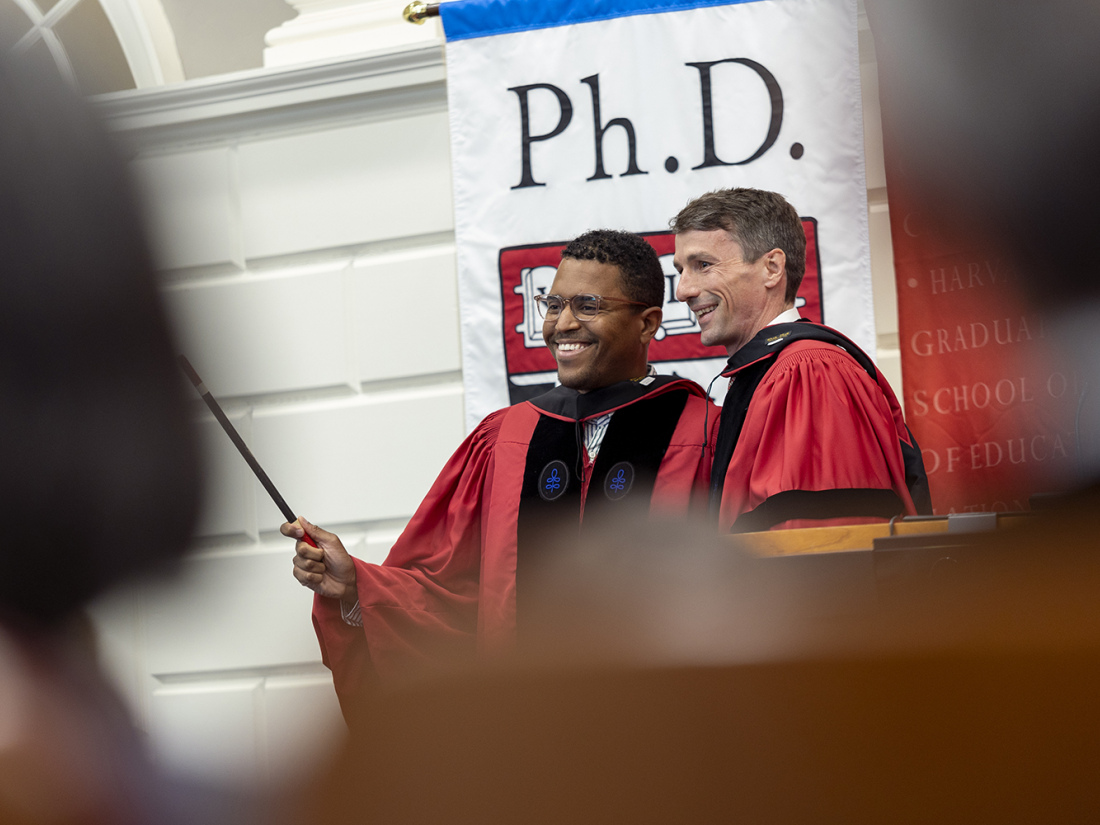
Additional Information
- Download the Doctoral Viewbook
- Admissions & Aid
The Harvard Ph.D. in Education trains cutting-edge researchers who work across disciplines to generate knowledge and translate discoveries into transformative policy and practice.
Offered jointly by the Harvard Graduate School of Education and the Harvard Kenneth C. Griffin Graduate School of Arts and Sciences, the Ph.D. in Education provides you with full access to the extraordinary resources of Harvard University and prepares you to assume meaningful roles as university faculty, researchers, senior-level education leaders, and policymakers.
As a Ph.D. candidate, you will collaborate with scholars across all Harvard graduate schools on original interdisciplinary research. In the process, you will help forge new fields of inquiry that will impact the way we teach and learn. The program’s required coursework will develop your knowledge of education and your expertise in a range of quantitative and qualitative methods needed to conduct high-quality research. Guided by the goal of making a transformative impact on education research, policy, and practice, you will focus on independent research in various domains, including human development, learning and teaching, policy analysis and evaluation, institutions and society, and instructional practice.
Curriculum Information
The Ph.D. in Education requires five years of full-time study to complete. You will choose your individual coursework and design your original research in close consultation with your HGSE faculty adviser and dissertation committee. The requirements listed below include the three Ph.D. concentrations: Culture, Institutions, and Society; Education Policy and Program Evaluation; and Human Development, Learning and Teaching .
We invite you to review an example course list, which is provided in two formats — one as the full list by course number and one by broad course category . These lists are subject to modification.
Ph.D. Concentrations and Examples
Summary of Ph.D. Program
Doctoral Colloquia In year one and two you are required to attend. The colloquia convenes weekly and features presentations of work-in-progress and completed work by Harvard faculty, faculty and researchers from outside Harvard, and Harvard doctoral students. Ph.D. students present once in the colloquia over the course of their career.
Research Apprenticeship The Research Apprenticeship is designed to provide ongoing training and mentoring to develop your research skills throughout the entire program.
Teaching Fellowships The Teaching Fellowship is an opportunity to enhance students' teaching skills, promote learning consolidation, and provide opportunities to collaborate with faculty on pedagogical development.
Comprehensive Exams The Written Exam (year 2, spring) tests you on both general and concentration-specific knowledge. The Oral Exam (year 3, fall/winter) tests your command of your chosen field of study and your ability to design, develop, and implement an original research project.
Dissertation Based on your original research, the dissertation process consists of three parts: the Dissertation Proposal, the writing, and an oral defense before the members of your dissertation committee.
Culture, Institutions, and Society (CIS) Concentration
In CIS, you will examine the broader cultural, institutional, organizational, and social contexts relevant to education across the lifespan. What is the value and purpose of education? How do cultural, institutional, and social factors shape educational processes and outcomes? How effective are social movements and community action in education reform? How do we measure stratification and institutional inequality? In CIS, your work will be informed by theories and methods from sociology, history, political science, organizational behavior and management, philosophy, and anthropology. You can examine contexts as diverse as classrooms, families, neighborhoods, schools, colleges and universities, religious institutions, nonprofits, government agencies, and more.
Education Policy and Program Evaluation (EPPE) Concentration
In EPPE, you will research the design, implementation, and evaluation of education policy affecting early childhood, K–12, and postsecondary education in the U.S. and internationally. You will evaluate and assess individual programs and policies related to critical issues like access to education, teacher effectiveness, school finance, testing and accountability systems, school choice, financial aid, college enrollment and persistence, and more. Your work will be informed by theories and methods from economics, political science, public policy, and sociology, history, philosophy, and statistics. This concentration shares some themes with CIS, but your work with EPPE will focus on public policy and large-scale reforms.
Human Development, Learning and Teaching (HDLT) Concentration
In HDLT, you will work to advance the role of scientific research in education policy, reform, and practice. New discoveries in the science of learning and development — the integration of biological, cognitive, and social processes; the relationships between technology and learning; or the factors that influence individual variations in learning — are transforming the practice of teaching and learning in both formal and informal settings. Whether studying behavioral, cognitive, or social-emotional development in children or the design of learning technologies to maximize understanding, you will gain a strong background in human development, the science of learning, and sociocultural factors that explain variation in learning and developmental pathways. Your research will be informed by theories and methods from psychology, cognitive science, sociology and linguistics, philosophy, the biological sciences and mathematics, and organizational behavior.
Program Faculty
The most remarkable thing about the Ph.D. in Education is open access to faculty from all Harvard graduate and professional schools, including the Harvard Graduate School of Education, the Faculty of Arts and Sciences, the Harvard Kennedy School, the Harvard Law School, Harvard Medical School, and the Harvard School of Public Health. Learn about the full Ph.D. Faculty.
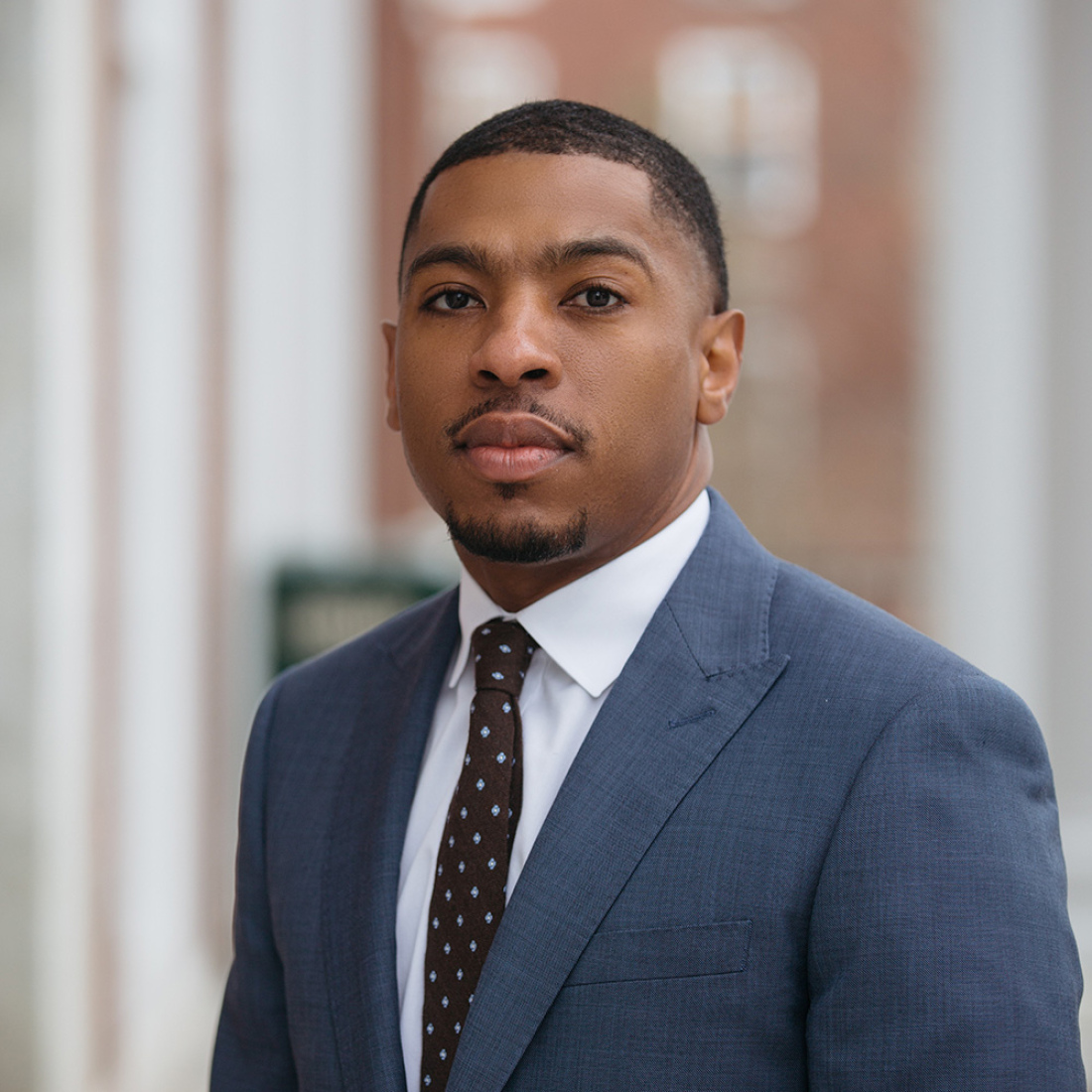
Jarvis R. Givens
Jarvis Givens studies the history of American education, African American history, and the relationship between race and power in schools.
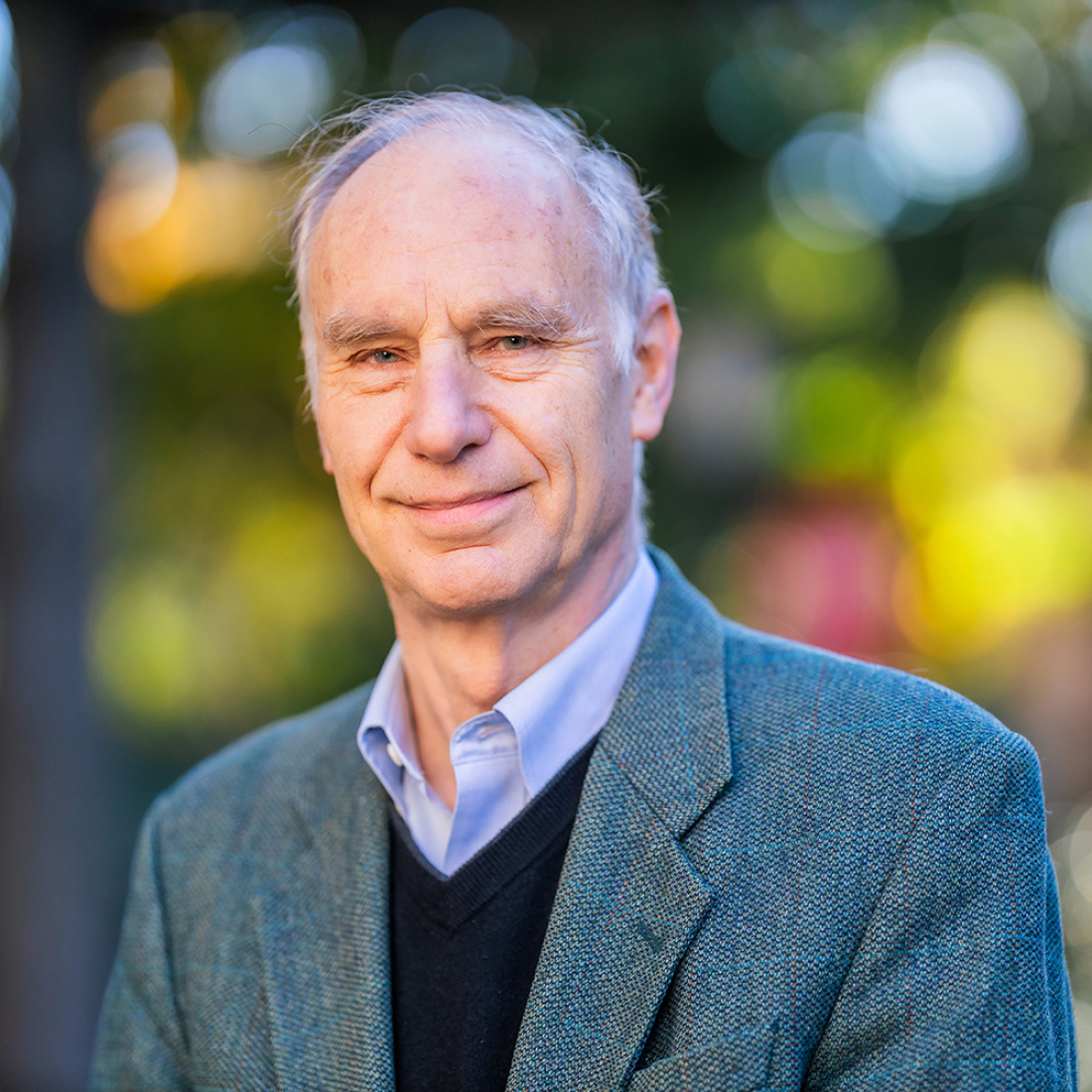
Paul L. Harris
Paul Harris is interested in the early development of cognition, emotion, and imagination in children.
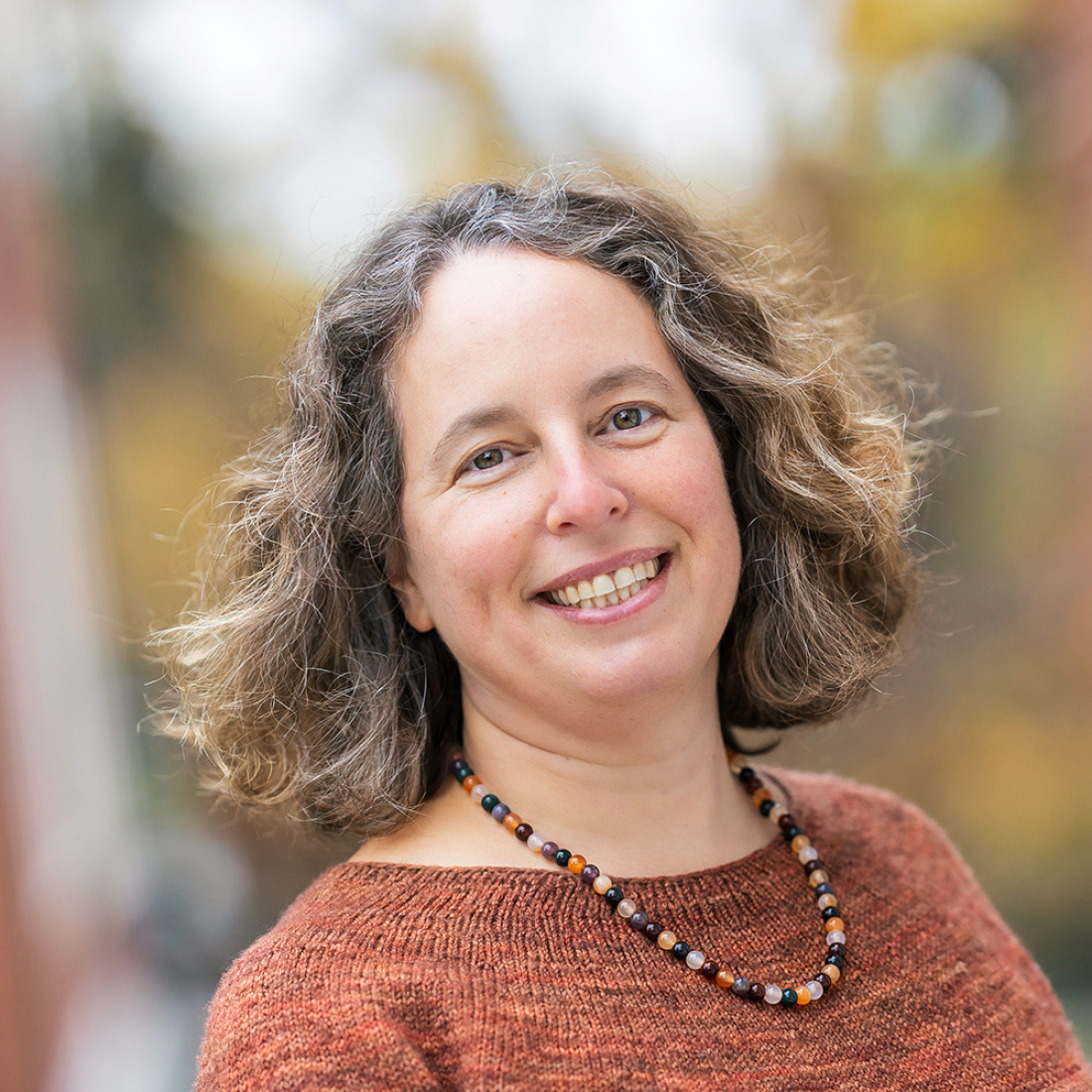
Meira Levinson
Meira Levinson is a normative political philosopher who works at the intersection of civic education, youth empowerment, racial justice, and educational ethics.
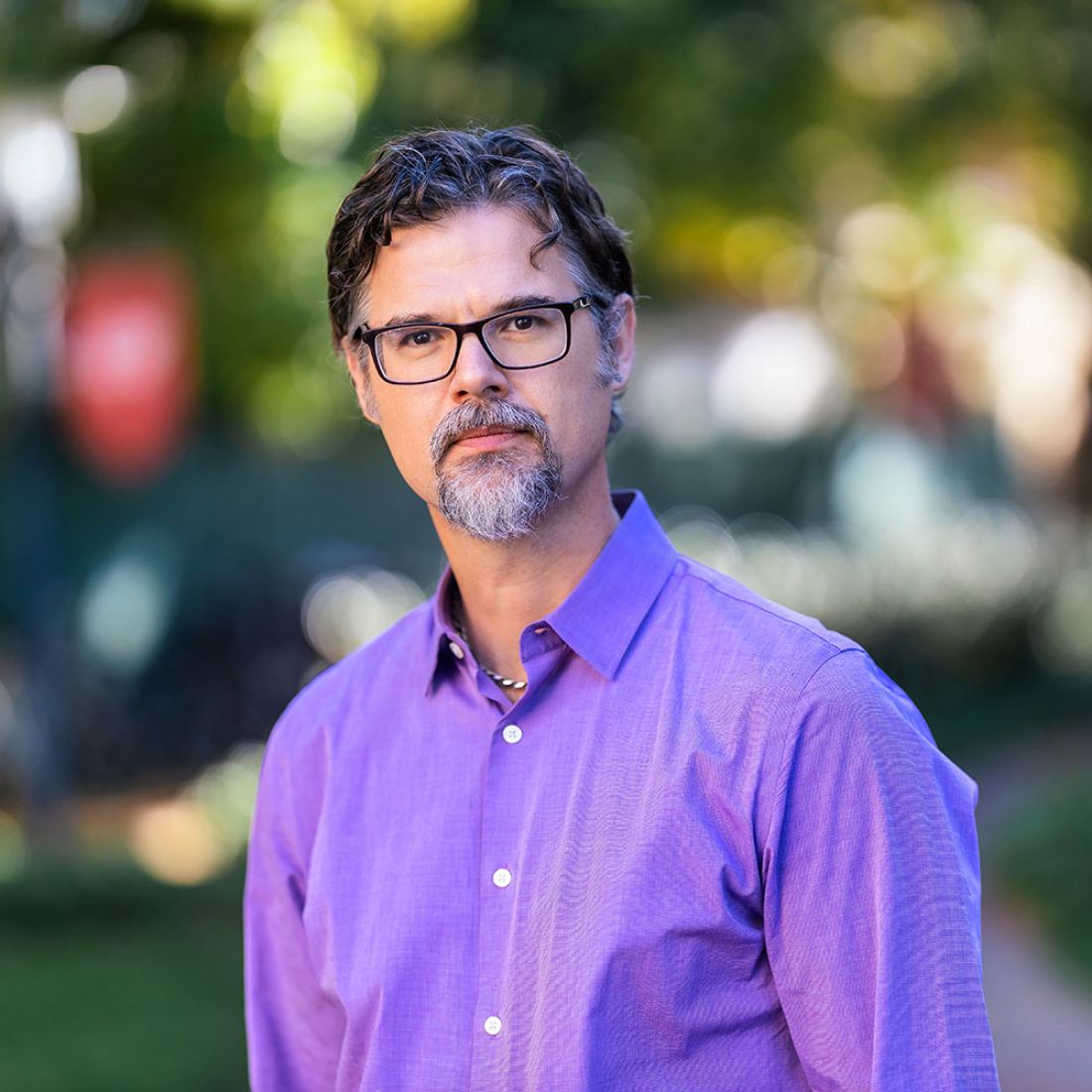
Luke W. Miratrix
Luke Miratrix is a statistician who explores how to best use modern statistical methods in applied social science contexts.
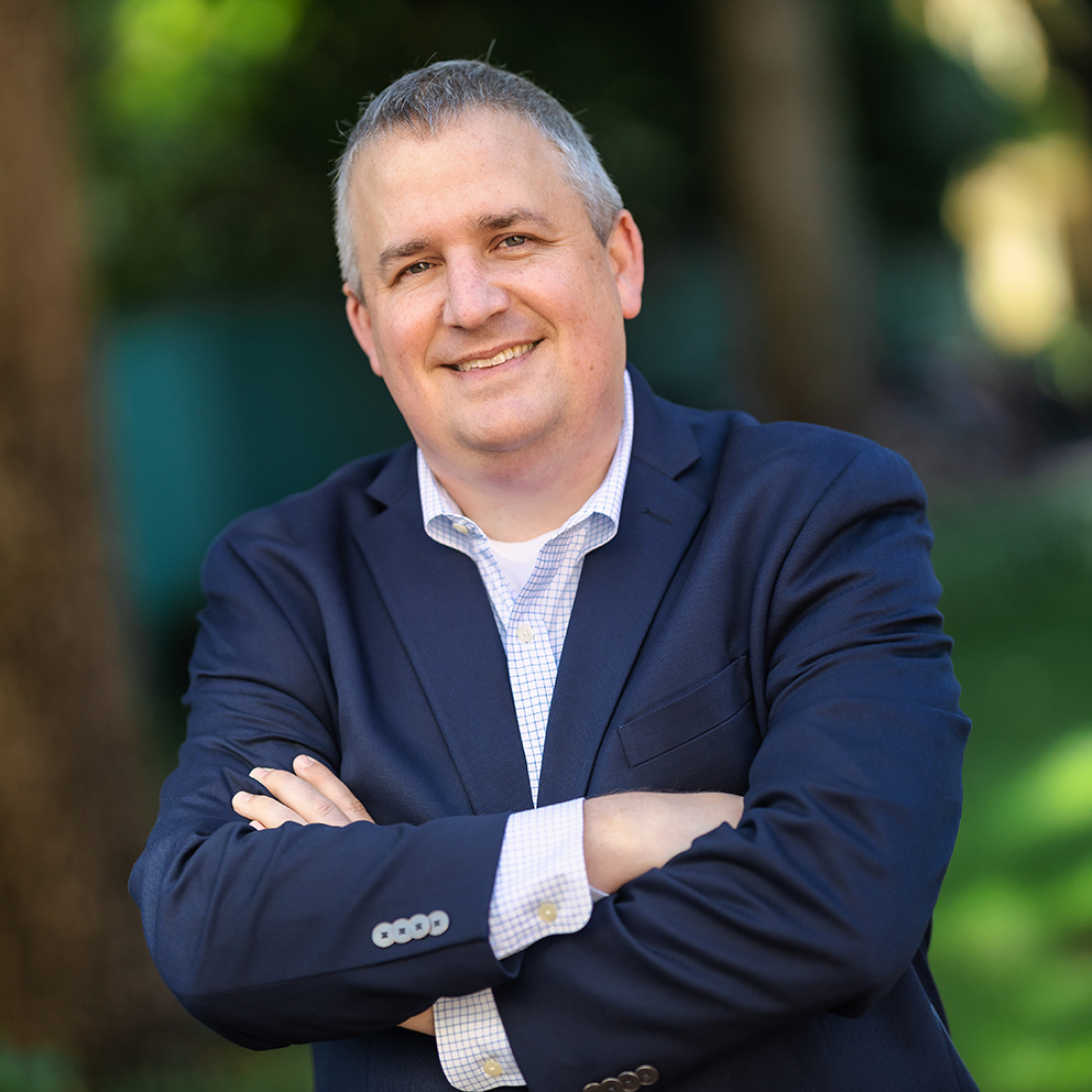
Eric Taylor
Eric Taylor studies the economics of education, with a particular interest in employer-employee interactions between schools and teachers hiring and firing decisions, job design, training, and performance evaluation.
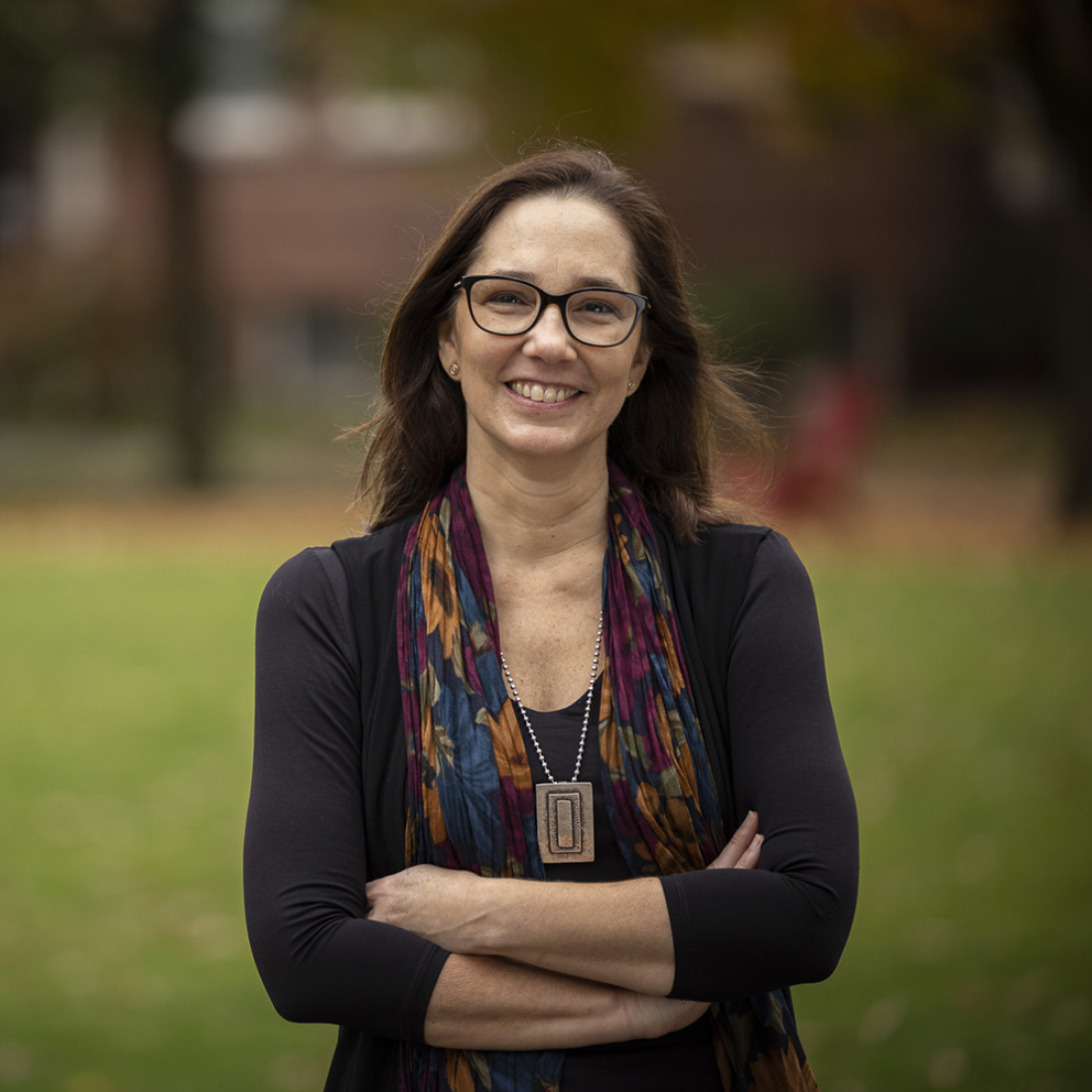
Paola Uccelli
Paola Ucelli studies socio-cultural and individual differences in the language development of multilingual and monolingual students.
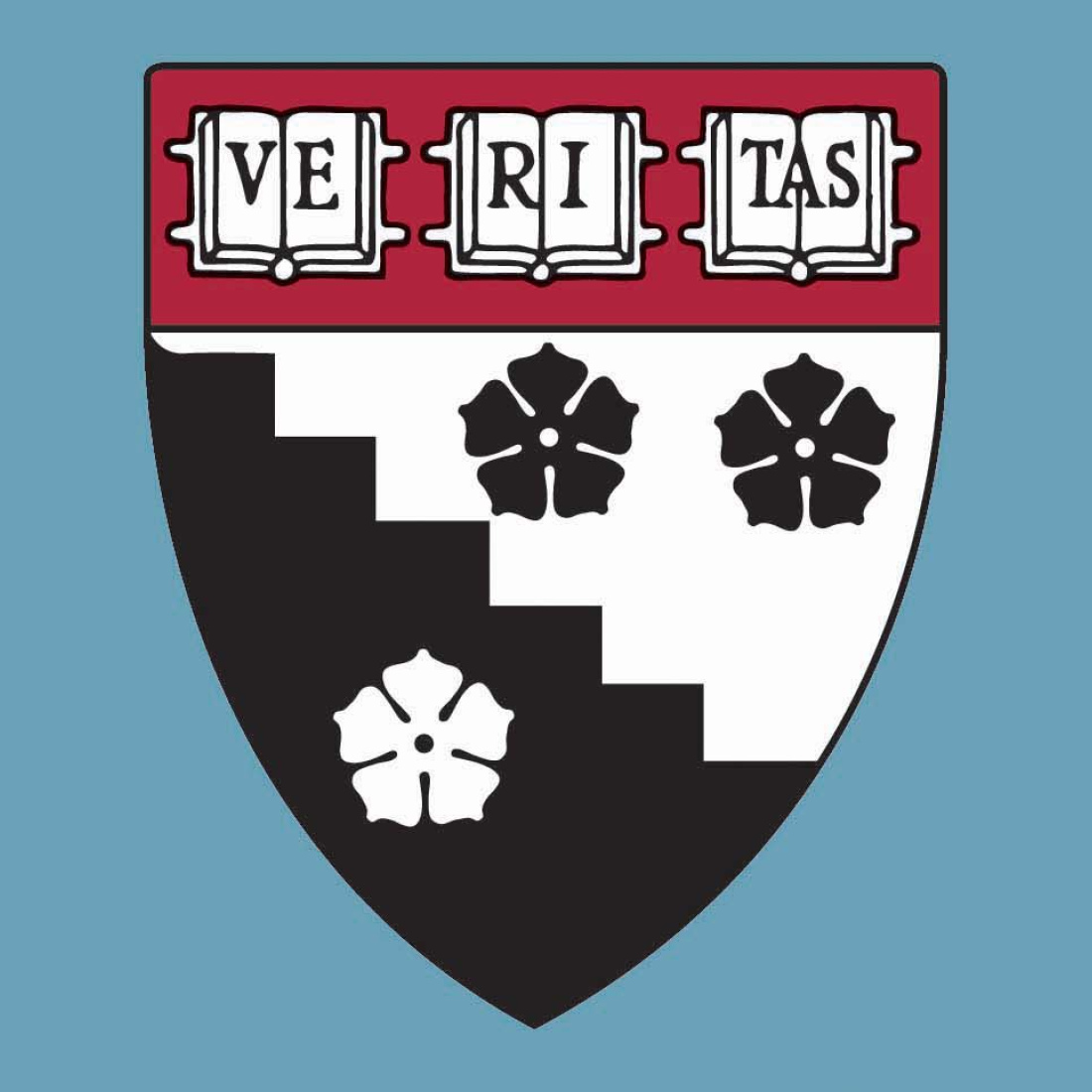
View Ph.D. Faculty
Dissertations.
The following is a complete listing of successful Ph.D. in Education dissertations to-date. Dissertations from November 2014 onward are publicly available in the Digital Access to Scholarship at Harvard (DASH) , the online repository for Harvard scholarship.
- 2022 Graduate Dissertations (265 KB pdf)
- 2021 Graduate Dissertations (177 KB pdf)
- 2020 Graduate Dissertations (121 KB pdf)
- 2019 Graduate Dissertations (68.3 KB pdf)
Student Directory
An opt-in listing of current Ph.D. students with information about their interests, research, personal web pages, and contact information:
Doctor of Philosophy in Education Student Directory
Introduce Yourself
Tell us about yourself so that we can tailor our communication to best fit your interests and provide you with relevant information about our programs, events, and other opportunities to connect with us.
Program Highlights
Explore examples of the Doctor of Philosophy in Education experience and the impact its community is making on the field:

Reshaping Teacher Licensure: Lessons from the Pandemic
Olivia Chi, Ed.M.'17, Ph.D.'20, discusses the ongoing efforts to ensure the quality and stability of the teaching workforce
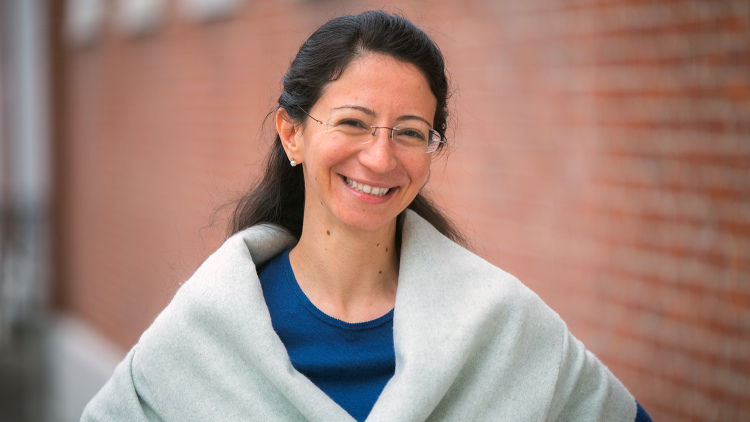
Lost in Translation
New comparative study from Ph.D. candidate Maya Alkateb-Chami finds strong correlation between low literacy outcomes for children and schools teaching in different language from home
- To save this word, you'll need to log in. Log In
abbreviation or noun
Definition of phd, examples of phd in a sentence.
These examples are programmatically compiled from various online sources to illustrate current usage of the word 'PhD.' Any opinions expressed in the examples do not represent those of Merriam-Webster or its editors. Send us feedback about these examples.
Word History
New Latin philosophiae doctor
1839, in the meaning defined above
Dictionary Entries Near PhD
Cite this entry.
“PhD.” Merriam-Webster.com Dictionary , Merriam-Webster, https://www.merriam-webster.com/dictionary/PhD. Accessed 28 Apr. 2024.
Subscribe to America's largest dictionary and get thousands more definitions and advanced search—ad free!

Can you solve 4 words at once?
Word of the day.
See Definitions and Examples »
Get Word of the Day daily email!
Popular in Grammar & Usage
More commonly misspelled words, commonly misspelled words, how to use em dashes (—), en dashes (–) , and hyphens (-), absent letters that are heard anyway, how to use accents and diacritical marks, popular in wordplay, the words of the week - apr. 26, 9 superb owl words, 'gaslighting,' 'woke,' 'democracy,' and other top lookups, 10 words for lesser-known games and sports, your favorite band is in the dictionary, games & quizzes.

- Harvard Business School →
- Doctoral Programs →
PhD Programs
- Accounting & Management
- Business Economics
- Health Policy (Management)
- Organizational Behavior
- Technology & Operations Management
Students in our PhD programs are encouraged from day one to think of this experience as their first job in business academia—a training ground for a challenging and rewarding career generating rigorous, relevant research that influences practice.
Our doctoral students work with faculty and access resources throughout HBS and Harvard University. The PhD program curriculum requires coursework at HBS and other Harvard discipline departments, and with HBS and Harvard faculty on advisory committees. Faculty throughout Harvard guide the programs through their participation on advisory committees.
How do I know which program is right for me?
There are many paths, but we are one HBS. Our PhD students draw on diverse personal and professional backgrounds to pursue an ever-expanding range of research topics. Explore more here about each program’s requirements & curriculum, read student profiles for each discipline as well as student research , and placement information.
The PhD in Business Administration grounds students in the disciplinary theories and research methods that form the foundation of an academic career. Jointly administered by HBS and GSAS, the program has five areas of study: Accounting and Management , Management , Marketing , Strategy , and Technology and Operations Management . All areas of study involve roughly two years of coursework culminating in a field exam. The remaining years of the program are spent conducting independent research, working on co-authored publications, and writing the dissertation. Students join these programs from a wide range of backgrounds, from consulting to engineering. Many applicants possess liberal arts degrees, as there is not a requirement to possess a business degree before joining the program
The PhD in Business Economics provides students the opportunity to study in both Harvard’s world-class Economics Department and Harvard Business School. Throughout the program, coursework includes exploration of microeconomic theory, macroeconomic theory, probability and statistics, and econometrics. While some students join the Business Economics program directly from undergraduate or masters programs, others have worked in economic consulting firms or as research assistants at universities or intergovernmental organizations.
The PhD program in Health Policy (Management) is rooted in data-driven research on the managerial, operational, and strategic issues facing a wide range of organizations. Coursework includes the study of microeconomic theory, management, research methods, and statistics. The backgrounds of students in this program are quite varied, with some coming from public health or the healthcare industry, while others arrive at the program with a background in disciplinary research
The PhD program in Organizational Behavior offers two tracks: either a micro or macro approach. In the micro track, students focus on the study of interpersonal relationships within organizations and the effects that groups have on individuals. Students in the macro track use sociological methods to examine organizations, groups, and markets as a whole, including topics such as the influence of individuals on organizational change, or the relationship between social missions and financial objectives. Jointly administered by HBS and GSAS, the program includes core disciplinary training in sociology or psychology, as well as additional coursework in organizational behavior.
Accounting & Management
Business economics , health policy (management) , management , marketing , organizational behavior , strategy , technology & operations management .

- Youth Program
- Wharton Online
How the PhD Program Works
Program Overview
Completing your doctorate at Wharton requires 5 years of full-time study. The first 2 years in the program prepare you for admission to candidacy by taking courses, qualifying exams, and starting research projects. In the last few years, you are primarily conducting research full-time including writing and defending your doctoral dissertation.
Admission to candidacy.
You begin by taking courses required for your program of study. All programs requires a preliminary exam, which may be either oral or written.
Some programs may have further requirements, such as an additional exam or research paper. If you enter with a master’s degree or other transfer credit, you may satisfy the formal course requirements more quickly.
Beginning the Wharton PhD Curriculum How the first two years of the Wharton program helped students discover their interests, learn the tools of the profession, and fuel their passion for teaching.
The Doctoral Dissertation
Upon successful completion of coursework and passing a preliminary examination, you are admitted to candidacy for the dissertation phase of your studies.
Your doctoral dissertation should contain original research that meets standards for published scholarship in your field. You are expected to be an expert in the topic you choose to research.
You are admitted to candidacy for the dissertation phase of your studies upon successful completion of coursework and passing a preliminary examination, but you can start thinking about and working on research of relevance at any time.
The dissertation process culminates with a “defense,” in which you defend the proposal orally before your dissertation committee.
While working on your dissertation, you interact extensively with Wharton faculty. Together with interested faculty, you create your own research community that includes your dissertation advisor and dissertation committee.
Policies and Procedures
Get more detailed explanation of course requirements, academic standards, the Teacher Development Program, time limits, and dissertation procedures and requirements.
Sample Program Sequence
Years 1 & 2.
Coursework Examination Research Papers Research Activities Field-Specific Requirements
Directed Reading & Research Admission to Candidacy Formulation of Research Topic
Years 4 & 5
Continued Research Oral Examination Dissertation
Hear From Our Doctoral Community
Why this phd student chose to study business ethics at wharton, uniting great minds, wharton’s stat bridge ma program takes flight, the diverse skill set you need to become a professor.
- Board of Directors PhD Project Staff
- Our History
- Member Stories
- Hall of Fame
- Is a PhD Right for You?
- Doctoral Resources
- Network of Support
- Doctoral Student Associations
- Faculty Networking Groups
- Corporate Partners
- University Partners
- Strategic Alliances
- Annual Conference
Building a stronger, more diverse workforce. Together.

We create the future
We empower our community, we believe diversity is crucial, why pursue a business phd.
There are many compelling reasons, including:
- an MBA is not required, just the GMAT/GRE test score;
- universities generally provide stipends and don’t charge tuition;
- business experience is highly valued;
- academic compensation packages are attractive
Dreams achieved
Meet our new faculty.
Andria Hill
University of Central Florida
Ryan Ballestero
University of Texas-Austin
Isaac Addae
Morgan State University
Lumumba Seegars
Harvard University
Karren Knowlton
University of Pennsylvania
Aziza Jones
Rutgers University
Summer Jackson
Hilda Carillo
University of South Florida
Michigan State University
Dorian Boncoeur
University of Texas at Dallas
Edwyna Hill
University of Georgia
Case Western Reserve University
- Crimson Careers
- For Employers
- Harvard College
- Harvard Kenneth C. Griffin Graduate School of Arts & Sciences
- Harvard Extension School
- Premed / Pre-Health
- Families & Supporters
- Faculty & Staff
- Prospective Students
- First Generation / Low Income
- International Students
- Students of Color
- Students with Disabilities
- Undocumented Students
- Explore Interests & Make Career Decisions
- Create a Resume/CV or Cover Letter
- Expand Your Network
- Engage with Employers
- Search for a Job
- Find an Internship
- January Experiences (College)
- Find & Apply for Summer Opportunities Funding
- Prepare for an Interview
- Negotiate an Offer
- Apply to Graduate or Professional School
- Access Resources
- AI for Professional Development and Exploration
- Arts & Entertainment
- Business & Entrepreneurship
- Climate, Sustainability, Environment, Energy
- Government, Int’l Relations, Education, Law, Nonprofits
- Life Sciences & Health
- Technology & Engineering
- Still Exploring
- Talk to an Advisor
Leveraging Your PhD: Why Employers Value Your Skills
- Share This: Share Leveraging Your PhD: Why Employers Value Your Skills on Facebook Share Leveraging Your PhD: Why Employers Value Your Skills on LinkedIn Share Leveraging Your PhD: Why Employers Value Your Skills on X
Guest post by Heer Joisher (Griffin GSAS Candidate in Developmental Biology) for MCS.
Harvard’s Mignone Center for Career Success recently hosted an insightful discussion spotlighting the remarkable journeys of a select group of GSAS alumni who have masterfully leveraged their Ph.D. degrees to forge unique and gratifying career paths. Their experiences not only illuminate the expansive landscape of career possibilities for graduate students but also stand as beacons of inspiration for Ph.D. students and recent graduates navigating their own professional journeys. Here are some reflections I’ve summarized from the panel discussion on exploring non-academic career paths: the motivations, the timing, and the process.
Why? – A Multitude of Motivations
Dean Emma Dench’s opening remarks for the panel, noting that approximately 50% of Harvard PhDs become intellectual leaders outside academia, set the stage for a discussion on the motivations driving individuals to explore non-academic career paths. These motivations are as diverse as the individuals themselves, ranging from financial considerations to differing interpretations of job satisfaction and expectations. Moreover, panelists emphasized the presence of abundant opportunities available beyond academia and the importance of gaining a comprehensive understanding of the broader professional landscape. Embracing this perspective involves stepping outside the traditional academic paradigms, challenging preconceptions about career paths dictated by one’s degree or department. Instead, it involves introspectively questioning what truly fosters personal fulfillment and utilizing one’s unique background and expertise to craft a career trajectory that aligns with individual aspirations.

When? – The Sooner, the Better

The panel collectively emphasized the importance of early exploration into non-academic career paths, highlighting the immense value in stepping beyond conventional trajectories and embracing diverse experiences. Their insight underscores that this journey isn’t solely about finding a different career path; it’s about broadening perspectives and building a vibrant professional community, irrespective of the ultimate career trajectory. While transitioning out of academia may be smoother for some fields or labs compared to others, actively delving into learning about alternative career paths enables individuals to challenge norms and foster connections with mentors who can offer invaluable support along the way. The environment at Harvard, with its diverse peers and alumni network, facilitates this exploration and openness to new opportunities, acting as a catalyst for personal and professional growth.
How? – Navigating the Process
Drawing from their diverse career paths, the panelists offered valuable strategies and frameworks to guide individuals through the transition process. Each insight struck a chord with attendees, offering relatable anecdotes and invaluable guidance. Below is a compilation of key takeaways distilled from the discussion:
- Embrace Career Exploration and Experimentation:
- Explore diverse opportunities and pathways even if they seem unconventional or outside your comfort zone
- Recognize that your first job doesn’t have to be perfect, and that career progression often involves trying different roles and industries
- Utilize resources like alumni and LinkedIn to learn about different careers, and experiences
- Identify the transferable skills gained during your academic journey and identify your strengths. Introspect on how your strengths align with roles outside academia, consider doubling down on skills you excel in and enjoy.

- Cultivate Meaningful Professional Relationships:
- Approach networking with a mindset of curiosity and growth, fostering genuine relationships that support your career development.
- Articulate your accomplishments and expertise with confidence to bolster your credibility and draw opportunities towards you.
- Engage in informational interviews to gain valuable insights into various job responsibilities, organizational cultures, and career paths, allowing you to assess your fit within different professional contexts.
- Take a proactive approach to relationship-building by categorizing connections based on shared interests and goals. Remember, networking is a two-way street; look for opportunities to offer support, share insights, and connect others within your network.

- Invest in Your Professional Growth:
- View informational interviews, hands-on learning opportunities and internships as pivotal investments in shaping your future career path.
- Proactively seek out opportunities that foster continuous learning, cultivate enduring professional relationships, and steer your career in desired direction.
- Hone the art of articulation and effective communication to confidently convey your skills, experiences, and achievements, aligning them with the needs of different roles and organizations.
- Conquer decision paralysis by taking action: apply for open positions and initiate conversations with new connections. Embrace the interview process as an opportunity for growth and learning, gaining valuable insights along the way.

In conclusion, the panel discussion offered profound insights into navigating non-academic career paths. These key takeaways underscore the significance of charting one’s unique path with confidence and purpose in the dynamic landscape of non-academic careers.
Meet the Panelists:
- Elias Bruegmann, PhD : Head of Product Data Science at Stripe
- Victoria Tillson Evans, PhD : Founder & President of Distinctive College Consulting
- Marinna Madrid, PhD : Co-Founder and Chief Product Officer at Cellino
- Jessica Paige, PhD : Social Scientist at RAND
- Paul Schwerda, PhD : Investment Manager at Baillie Gifford
- Roger Vargas, PhD : Computational Scientist at Moderna
Quotes from Attendees:
“As an upper-level PhD student, the seminar provided valuable information and insights on careers outside of academia. It was great to hear from a diversity of people with different perspectives and who followed various career paths.” – Stephan Foianini, G5, Department of Molecular and Cellular Biology, Harvard University
- What Can You Be with a PhD
- Beyond the Professoriate

Beyond the PhD
Supporting STEM career development beyond academia
According to a report by the U.S. National Science Foundation (NSF) called “Doctorate Recipients from U.S. Universities,” the percentage of new PhD recipients in the United States who reported having definite commitments for a faculty position at a U.S. institution immediately after graduation was around 38% in the most recent data available, which covers the year 2019. So where are the rest of the PhDs working?
This website is a free resource for undergraduate students, graduate students and postdocs that want to learn about careers in academia and beyond. We are a student-led group that aims to provide support for students that do not have access to programs on alternative careers in science.
Sign-up for our Friday digest to receive updates on upcoming Career Discovery Seminar series, career development workshops, our Ambassador Program, blog articles and more!
Send us a photo of you doing bench science or presenting research to be featured in our “Day in the Life” twitter campaign.
Let us help you find your career beyond the PhD.
First time to the site? Start here

Recent News and Career Blog Articles
3/27 workshop on emotional intelligence with tatyana gao.

Developing Leadership Qualities in Graduate School

Leadership in Academia and the Power of ‘No’
New posts in your inbox.
Enter your email address

We were formed in 2018 by a University of Connecticut Biomedical Sciences PhD candidate and a postdoctoral fellow to provide resources for students on non-academic, industry, and academic positions within Biomedical Science. Transitions to virtual programming enabled us to create an online presence for all students interested in learning more about their career options.
We hope to see you at our next event!
Share this:.
- Click to share on Twitter (Opens in new window)
- Click to share on Facebook (Opens in new window)
- Click to email a link to a friend (Opens in new window)
- Click to share on LinkedIn (Opens in new window)
- Click to share on Reddit (Opens in new window)
- Click to share on Pocket (Opens in new window)
- Click to share on WhatsApp (Opens in new window)
- History, Facts & Figures
- YSM Dean & Deputy Deans
- YSM Administration
- Department Chairs
- YSM Executive Group
- YSM Board of Permanent Officers
- FAC Documents
- Current FAC Members
- Appointments & Promotions Committees
- Ad Hoc Committees and Working Groups
- Chair Searches
- Leadership Searches
- Organization Charts
- Faculty Demographic Data
- Professionalism Reporting Data
- 2022 Diversity Engagement Survey
- State of the School Archive
- Faculty Climate Survey: YSM Results
- Strategic Planning
- Mission Statement & Process
- Beyond Sterling Hall
- COVID-19 Series Workshops
- Previous Workshops
- Departments & Centers
- Find People
- Biomedical Data Science
- Health Equity
- Inflammation
- Neuroscience
- Global Health
- Diabetes and Metabolism
- Policies & Procedures
- Media Relations
- A to Z YSM Lab Websites
- A-Z Faculty List
- A-Z Staff List
- A to Z Abbreviations
- Dept. Diversity Vice Chairs & Champions
- Dean’s Advisory Council on Lesbian, Gay, Bisexual, Transgender, Queer and Intersex Affairs Website
- Minority Organization for Retention and Expansion Website
- Office for Women in Medicine and Science
- Committee on the Status of Women in Medicine Website
- Director of Scientist Diversity and Inclusion
- Diversity Supplements
- Frequently Asked Questions
- Recruitment
- By Department & Program
- News & Events
- Executive Committee
- Aperture: Women in Medicine
- Self-Reflection
- Portraits of Strength
- Mindful: Mental Health Through Art
- Event Photo Galleries
- Additional Support
- MD-PhD Program
- PA Online Program
- Joint MD Programs
- How to Apply
- Advanced Health Sciences Research
- Clinical Informatics & Data Science
- Clinical Investigation
- Medical Education
- Visiting Student Programs
- Special Programs & Student Opportunities
- Residency & Fellowship Programs
- Center for Med Ed
- Organizational Chart
- Leadership & Staff
- Committee Procedural Info (Login Required)
- Faculty Affairs Department Teams
- Recent Appointments & Promotions
- Academic Clinician Track
- Clinician Educator-Scholar Track
- Clinican-Scientist Track
- Investigator Track
- Traditional Track
- Research Ranks
- Instructor/Lecturer
- Social Work Ranks
- Voluntary Ranks
- Adjunct Ranks
- Other Appt Types
- Appointments
- Reappointments
- Transfer of Track
- Term Extensions
- Timeline for A&P Processes
- Interfolio Faculty Search
- Interfolio A&P Processes
- Yale CV Part 1 (CV1)
- Yale CV Part 2 (CV2)
- Samples of Scholarship
- Teaching Evaluations
- Letters of Evaluation
- Dept A&P Narrative
- A&P Voting
- Faculty Affairs Staff Pages
- OAPD Faculty Workshops
- Leadership & Development Seminars
- List of Faculty Mentors
- Incoming Faculty Orientation
- Faculty Onboarding
- Past YSM Award Recipients
- Past PA Award Recipients
- Past YM Award Recipients
- International Award Recipients
- Nominations Calendar
- OAPD Newsletter
- Fostering a Shared Vision of Professionalism
- Academic Integrity
- Addressing Professionalism Concerns
- Consultation Support for Chairs & Section Chiefs
- Policies & Codes of Conduct
- Health & Well-being
- First Fridays
- Fund for Physician-Scientist Mentorship
- Grant Library
- Grant Writing Course
- Mock Study Section
- Research Paper Writing
- Funding Opportunities
- Join Our Voluntary Faculty
- Child Mental Health: Fostering Wellness in Children
- Faculty Resources
- Research by Keyword
- Research by Department
- Research by Global Location
- Translational Research
- Research Cores & Services
- Program for the Promotion of Interdisciplinary Team Science (POINTS)
- CEnR Steering Committee
- Experiential Learning Subcommittee
- Goals & Objectives
- Issues List
- Print Magazine PDFs
- Print Newsletter PDFs
- YSM Events Newsletter
- Social Media
- Patient Care
INFORMATION FOR
- Residents & Fellows
- Researchers
Marc Potenza, MD, PhD, Inaugural Endowed Professorship
Dr. marc potenza.
Dr. Marc Potenza was recently named the inaugural Steven M. Southwick Professor of Psychiatry.
A professorship has been established at Yale to honor and commemorate the contributions of the late Steven M. Southwick, MD, one of the world’s leading experts on psychological trauma and human resilience. The Director of the Women and Addictive Disorders Core within Women’s Health Research at Yale Marc Potenza, MD, PhD, has been named the inaugural Steven M. Southwick Professor of Psychiatry. Named professorships are among the highest honors Yale bestows on its faculty.
At the time of his death in 2022, Southwick was the Glenn H. Greenberg Professor Emeritus of Psychiatry, PTSD, and Resilience at Yale School of Medicine, and medical director emeritus of the Clinical Neuroscience Division of the National Center for PTSD of the U.S. Department of Veterans Affairs.
“I’m thrilled that Marc Potenza is the inaugural Southwick professor,” said John H. Krystal, MD, Robert L. McNeil, Jr. Professor of Translational Research and Professor of Psychiatry, of Neuroscience, and of Psychology, and chair of the Yale Department of Psychiatry. “Like Dr. Southwick, Marc has spent his entire professional career at Yale. The two were also friends and collaborators. Marc has emerged as an important leader in the addiction field and an expert in non-drug addictions, including gambling disorder.”
“I am deeply honored to be named as the Steven M. Southwick professor," Potenza said. “I am particularly grateful to have worked with Dr. Southwick and have experienced firsthand his kindness, thoughtfulness, and expertise in researching resilience in the setting of trauma. His pioneering perspective to focus on resilience is one that resonates strongly with me as resilience is key to navigating significantly disruptive life experiences. My hope is to continue research into what helps people manage stressful life events and thrive moving forward, and his work greatly facilitates future research in this area.”
Potenza, who completed his undergraduate and medical school education at Yale as well as his internship, psychiatric residency, and addiction psychiatry fellowship training, leads the Division of Addiction Research within the Department of Psychiatry. He is also director of the Center of Excellence in Gambling Research at Yale, and the Yale Program for Research on Impulsivity and Impulse Control Disorders.
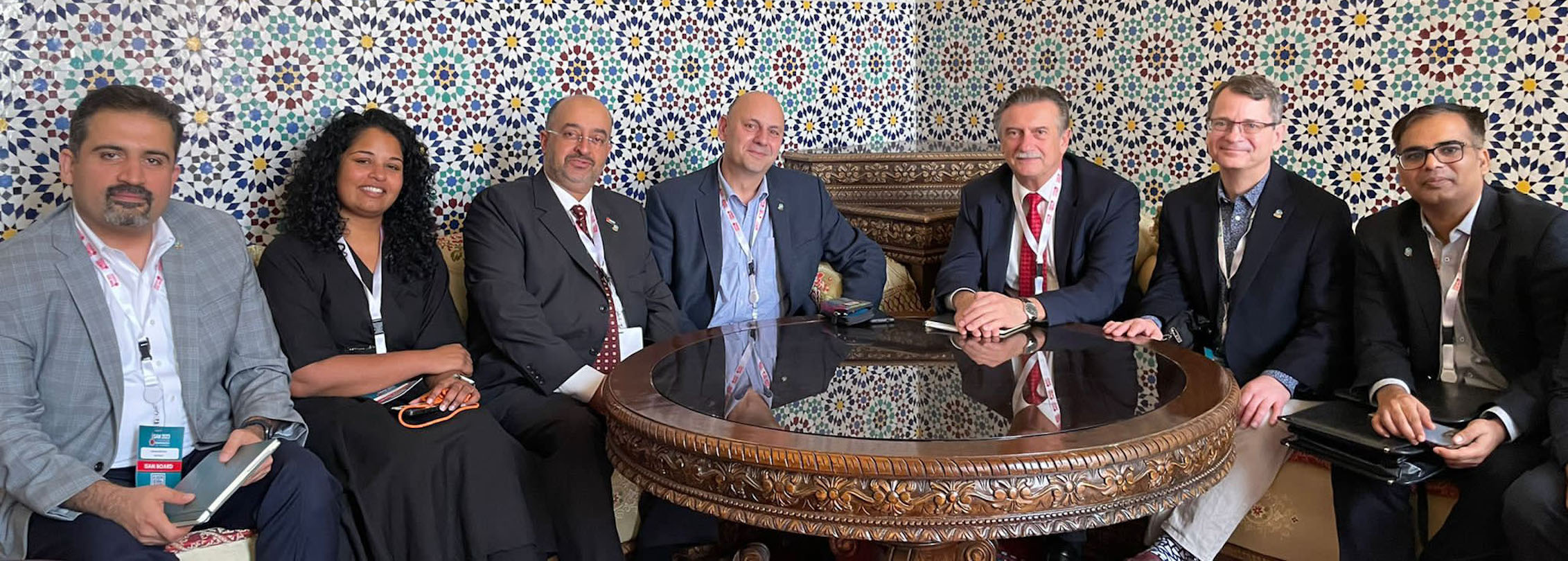
At the state level, he is a senior scientist at the Connecticut Council on Problem Gambling. Nationally and internationally, he has consulted to the Substance Abuse and Mental Health Services Administration, National Registry of Effective Programs, National Institutes of Health, American Psychiatric Association, and World Health Organization on matters of addiction. He is on the boards of multiple national organizations including Children and Screens, the Addiction Policy Forum, and the National Center on Problem Gambling and is the president-elect of the International Society of Addiction Medicine.
Featured in this article
- Marc Potenza, PhD, MD Steven M. Southwick Professor of Psychiatry and Professor in the Child Study Center and of Neuroscience; Director, Center of Excellence in Gambling Research; Director, Yale Program for Research on Impulsivity and Impulse Control Disorders; Director, Women and Addictive Disorders, Women's Health Research at Yale
Sustainability PhD grad committed to sustainable energy transitions, energy justice
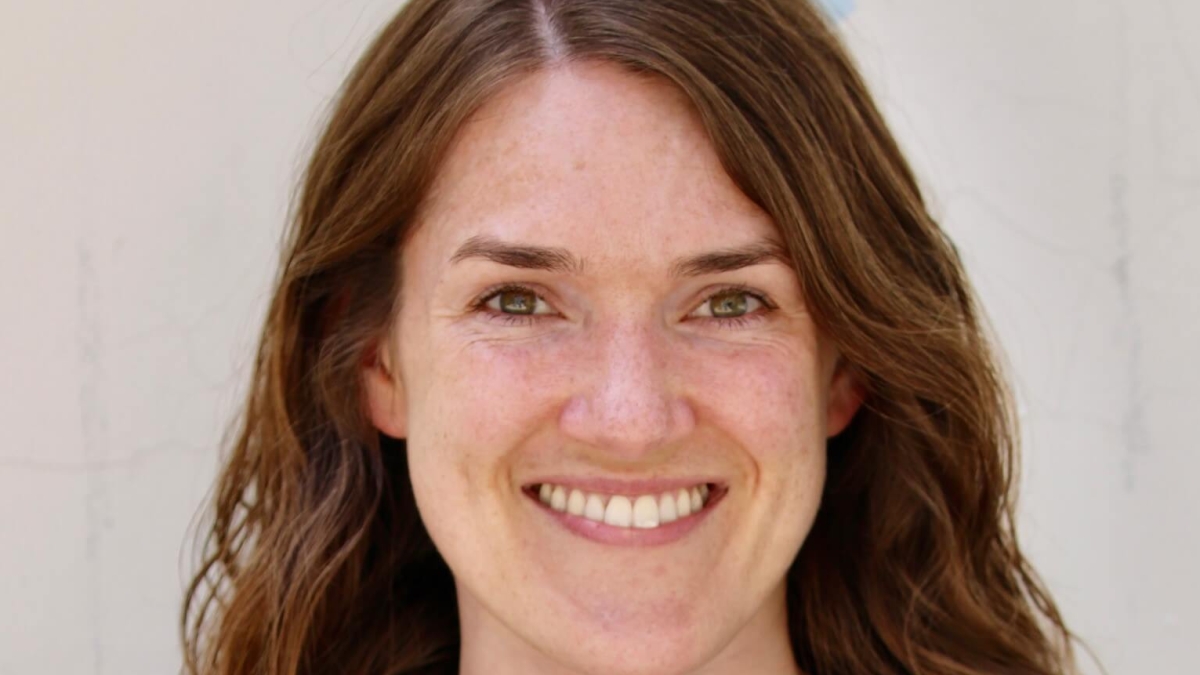
Rebecca Shelton will graduate this spring with a PhD in sustainability from the College of Global Futures. She has also been named the spring 2024 outstanding graduate of the School of Sustainability. Courtesy photo
Editor’s note: This story is part of a series of profiles of notable spring 2024 graduates .
In the face of the current climate crisis, scientists, scholars, lawmakers and corporations in the U.S. and worldwide are speeding up the shift to renewable energy systems and decarbonization .
This spring, as a graduate from Arizona State University's College of Global Futures with a PhD in sustainability, Rebecca Shelton is joining this energy justice movement.
“Her talents in communication, her research integrity and rigor, and her personal ethics all set her on a path to make a considerable impact on issues that really matter for social justice,” said her PhD advisor Hallie Eakin , professor at the School of Sustainability.
“Throughout all her work, she has been motivated to give back to her community and to use her work to influence social change at all levels.”
From Central Appalachia, Kentucky, Shelton — also the spring 2024 outstanding graduate of the School of Sustainability — witnessed her community's economic and social struggles during energy transitions, such as the decline of the tobacco economy and, now, the challenges of shifting from coal to alternative energy sources.
This experience ignited her passion for studying sustainable energy transformations and enacting equitable legislative changes for impacted communities while transitioning to a more sustainable future.
“Her deep ties to Appalachia and her experience working in impoverished communities in Mexico City, rural Peru and rural Kentucky have given her insights into social inequity, sustainability transitions and the complexity of economic and social ties to place and vocation that few students have,” Eakin said.
She has been tackling the pressing issue of integrating justice and equity into clean energy policies through her dual roles as a full-time scholar and practitioner.
As a scholar, she has a prolific record of leading and contributing to 12 publications, demonstrating her academic leadership and commitment to interdisciplinary sustainable science and energy policies.
During her time at ASU, Shelton worked alongside Eakin as a research assistant for MEGADAPT and the Transformations to Sustainability Project in Mexico. Shelton’s research initiatives included examining water scarcity and flooding in Mexico City and developing community engagement strategies for communicating complex urban system models to local communities.
“The project introduced me to social and interdisciplinary science and was an incredibly valuable experience,” Shelton said.
In addition to pursuing a PhD degree at ASU, she is the director of policy at Appalachian Citizens Law Center .
Shelton's dissertation, titled “The Politics of Justice in the Energy Transition: Policy Advocates and Justice Dilemmas,” researched justice advocacy in New Mexico and Illinois energy policy initiatives.
Through extensive stakeholder interviews, engagement with over 90 stakeholders involved in the legislative process, and analysis of legislative documents, she examined the impacts of advocating for just and equitable energy systems on climate policy legislative processes and outcomes.
“The wealth of knowledge she pulled together is incredibly impressive, and her deep insights into these two very complex policy processes from the perspective of justice advocates are cutting edge,” Eakin said.
After graduation, Shelton plans to continue working for the law center and seek opportunities to research the politics of energy justice.
Below, the new PhD graduate shared with us about her journey at ASU.
Question: What drew you to sustainability, and why did you choose to attend ASU?
Answer: I started out as an environmental scientist; specifically, I had a master's degree in integrated plant and soil science. As I was pursuing these degrees in natural science, I realized over and over again that the biggest roadblocks to progress towards sustainability were politics and social systems, which I knew little about.
That’s why I decided to pursue an interdisciplinary degree in sustainability. I was looking for an interdisciplinary program and thought the School of Sustainability at ASU offered an exciting opportunity to pursue the degree.
Q: Can you share what you do as director of policy at Appalachian Citizens Law Center?
A: I conduct policy analysis and lead campaigns on environmental justice issues and worker health and safety in the Central Appalachian region. Specifically, my work focuses on coal mine reclamation, black lung disease, drinking water, and promoting healthy communities and economies in the face of a declining coal industry.
Q: What’s the best piece of advice you’d give to those still in school?
A: Take the path that makes the most sense to you. Do not be afraid to adjust or change course. Respect and value those who support you and invest in your success.
Q: If someone gave you $40 million to solve one problem on our planet, what would you tackle?
A: I’m not sure that $40 million is enough money to solve any one problem, but I actually really appreciate the approach that MacKenzie Scott took in her yield grant funding opportunity.
Providing transformative amounts of funding to many organizations and causes that do outstanding work might be the way that I would distribute the funding.
More Sun Devil community
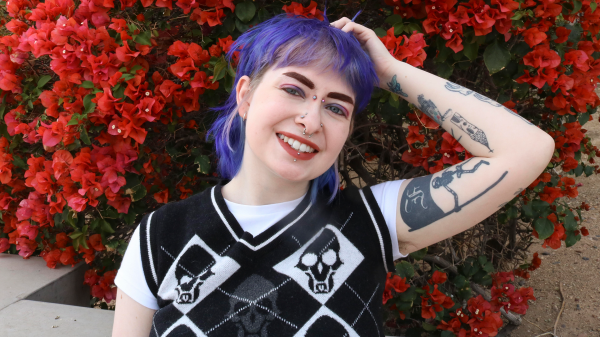
Media arts and sciences grad: ‘I am capable of doing what I previously thought was unthinkable’
Editor’s note: This story is part of a series of profiles of notable spring 2024 graduates. Bailey Pyritz, known in the Valley’s local music scene as Kylo Gun, graduates this May with a Bachelor of…
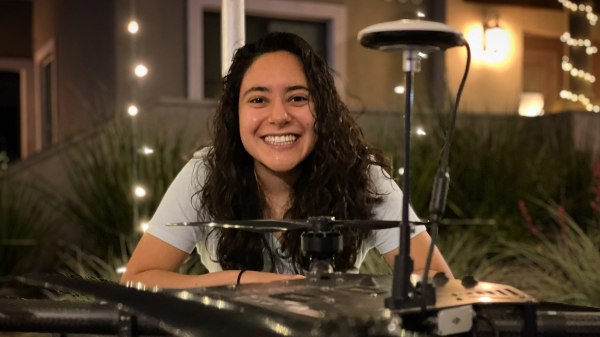
Media arts and sciences PhD redesigns community through research in human-computer Interaction
Editor’s note: This story is part of a series of profiles of notable spring 2024 graduates. Alejandra Rodriguez Vega, who is receiving her PhD from the media arts and sciences program in the School…
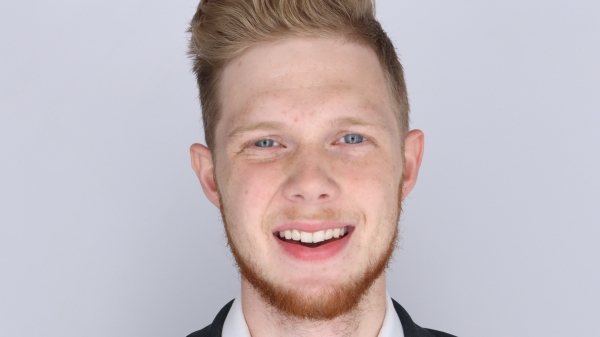
Leadership and service drove ASU grad's undergraduate experience
Editor’s note: This story is part of a series of profiles of notable spring 2024 graduates. Leadership, service and community involvement were the hallmarks of Harrison Sears’ undergraduate…
Driving Innovations in Biostatistics with Denise Scholtens, PhD
“I'm continually surprised by new data types. I think that we will see the emergence of a whole new kind of technology that we probably can't even envision five years from now…When I think about where the field has come over the past 20 years, it's just phenomenal.” — Denise Scholtens, PhD
- Director, Northwestern University Data Analysis and Coordinating Center (NUDACC)
- Chief of Biostatistics in the Department of Preventive Medicine
- Professor of Preventive Medicine in the Division of Biostatistics and of Neurological Surgery
- Member of Northwestern University Clinical and Translational Sciences Institute (NUCATS)
- Member of the Robert H. Lurie Comprehensive Cancer Center
Episode Notes
Since arriving at Feinberg in 2004, Scholtens has played a central role in the dramatic expansion of biostatistics at the medical school. Now the Director of NUDACC, Scholtens brings her expertise and leadership to large-scale, multicenter studies that can lead to clinical and public health practice decision-making.
- After discovering her love of statistics as a high school math teacher, Scholtens studied bioinformatics in a PhD program before arriving at Feinberg in 2004.
- Feinberg’s commitment to biostatistics has grown substantially in recent decades. Scholtens was only one of five biostatisticians when she arrived. Now she is part of a division with almost 50 people.
- She says being a good biostatistician requires curiosity about other people’s work, knowing what questions to ask and tenacity to understand subtitles of so much data.
- At NUDACC, Scholtens and her colleagues specialize in large-scale, multicenter prospective studies and clinical trials that lead to clinical or public health practice decision-making. They operate at the executive level and oversee all aspects of the study design.
- Currently, Scholtens is involved with the launch of a large study, along with The Ohio State University, that received a $14 million grant to look at the effectiveness of aspirin in the prevention of hypertensive disorders in pregnancy.
- Scholtens first started her work in data coordinating through the Hyperglycemia Adverse Pregnancy Outcome (HAPO) study, which looked at 25,000 pregnant individuals. This led to a continued interest in fetal and maternal health.
- When it comes to supportive working environments, Scholtens celebrates the culture at Feinberg, and especially her division in biostatistics, for being collaborative as well as genuinely supportive of each other’s projects. She attributes this to strong leadership which established a culture with these guiding principles.
Additional Reading
- Read more about the ASPIRIN trial and other projects taking place at NUDACC
- Discover a study linking mothers’ obesity-related genes to babies’ birth weight, which Scholtens worked in through the HAPO study
- Browse all of Scholtens recent publications
Recorded on February 21, 2024.
Continuing Medical Education Credit
Physicians who listen to this podcast may claim continuing medical education credit after listening to an episode of this program..
Target Audience
Academic/Research, Multiple specialties
Learning Objectives
At the conclusion of this activity, participants will be able to:
- Identify the research interests and initiatives of Feinberg faculty.
- Discuss new updates in clinical and translational research.
Accreditation Statement
The Northwestern University Feinberg School of Medicine is accredited by the Accreditation Council for Continuing Medical Education (ACCME) to provide continuing medical education for physicians.
Credit Designation Statement
The Northwestern University Feinberg School of Medicine designates this Enduring Material for a maximum of 0.50 AMA PRA Category 1 Credit(s)™. Physicians should claim only the credit commensurate with the extent of their participation in the activity.
American Board of Surgery Continuous Certification Program
Successful completion of this CME activity enables the learner to earn credit toward the CME requirement(s) of the American Board of Surgery’s Continuous Certification program. It is the CME activity provider's responsibility to submit learner completion information to ACCME for the purpose of granting ABS credit.
All the relevant financial relationships for these individuals have been mitigated.
Disclosure Statement
Denise Scholtens, PhD, has nothing to disclose. Course director, Robert Rosa, MD, has nothing to disclose. Planning committee member, Erin Spain, has nothing to disclose. FSM’s CME Leadership, Review Committee, and Staff have no relevant financial relationships with ineligible companies to disclose.
Read the Full Transcript
[00:00:00] Erin Spain, MS: This is Breakthroughs, a podcast from Northwestern University Feinberg School of Medicine. I'm Erin Spain, host of the show. Northwestern University Feinberg School of Medicine is home to a team of premier faculty and staff biostatisticians, who are the driving force of data analytic innovation and excellence here. Today, we are talking with Dr. Denise Scholtens, a leader in biostatistics at Northwestern, about the growing importance of the field, and how she leverages her skills to collaborate on several projects in Maternal and Fetal Health. She is the Director of the Northwestern University Data Analysis and Coordinating Center, NUDACC, and Chief of Biostatistics in the Department of Preventive Medicine, as well as Professor of Preventive Medicine and Neurological Surgery. Welcome to the show.
[00:01:02] Denise Scholtens, PhD: Thank you so much.
[00:01:02] Erin Spain, MS: So you have said in the past that you were drawn to this field of biostatistics because you're interested in both math and medicine, but not interested in becoming a clinician. Tell me about your path into the field and to Northwestern.
[00:01:17] Denise Scholtens, PhD: You're right. I have always been interested in both math and medicine. I knew I did not want to be involved in clinical care. Originally, fresh out of college, I was a math major and I taught high school math for a couple of years. I really enjoyed that, loved the kids, loved the teaching parts of things. Interestingly enough, my department chair at the time assigned me to teach probability and statistics to high school seniors. I had never taken a statistics course before, so I was about a week ahead of them in our classes and found that I just really enjoyed the discipline. So as much as I loved teaching, I did decide to go ahead and invest in this particular new area that I had found and I really enjoyed. So I wanted to figure out how I could engage in the field of statistics. Decided to see, you know, exactly how studying statistics could be applied to medicine. At the time, Google was brand new. So I literally typed in the two words math and medicine to see what would come up. And the discipline of biostatistics is what Google generated. And so here I am, I applied to grad school and it's been a great fit for me.
[00:02:23] Erin Spain, MS: Oh, that's fantastic. So you went on to get a PhD, and then you came to Northwestern in 2004. And so tell me a little bit about the field then and how it's changed so dramatically since.
[00:02:36] Denise Scholtens, PhD: So yes, I started here at Northwestern in 2004, just a few months after I had defended my thesis. At the time there was really an emerging field of study called bioinformatics. So I wrote my thesis in the space of genomics data analysis with what at the time was a brand new technology, microarrays. This was the first way we could measure gene transcription at a high throughput level. So I did my thesis work in that space. I studied at an institution with a lot of strengths and very classical statistics. So things that we think of in biostatistics like clinical trial design, observational study analysis, things like that. So I had really classic biostatistics training and then complimented that with sort of these emerging methods with these high dimensional data types. So I came to Northwestern here and I sort of felt like I lived in two worlds. I had sort of classic biostat clinical trials, which were certainly, you know, happening here. And, that work was thriving here at Northwestern, but I had this kind of new skillset, and I just didn't quite know how to bring the two together. That was obviously a long time ago, 20 years ago. Now we think of personalized medicine and genomic indicators for treatment and, you know, there's a whole variety of omics data variations on the theme that are closely integrated with clinical and population level health research. So there's no longer any confusion for me about how those two things come together. You know, they're two disciplines that very nicely complement each other. But yeah, I think that does speak to how the field has changed, you know, these sort of classic biostatistics methods are really nicely blended with a lot of high dimensional data types. And it's been fun to be a part of that.
[00:04:17] Erin Spain, MS: There were only a handful of folks like you at Northwestern at the time. Tell me about now and the demand for folks with your skill set.
[00:04:26] Denise Scholtens, PhD: When I came to Northwestern, I was one of a very small handful of biostatistics faculty. There were five of us. We were not even called a division of biostatistics. We were just here as the Department of Preventive Medicine. And a lot of the work we did was really very tightly integrated with the epidemiologists here in our department and we still do a lot of that for sure. There was also some work going on with the Cancer Center here at Northwestern. But yeah, a pretty small group of us, who has sort of a selected set of collaborations. You know, I contrast that now to our current division of biostatistics where we are over 20s, pushing 25, depending on exactly how you want to count. Hoping to bring a couple of new faculty on board this calendar year. We have a staff of about 25 statistical analysts. And database managers and programmers. So you know, when I came there were five faculty members and I think two master's level staff. We are now pushing, you know, pushing 50 people in our division here so it's a really thriving group.
[00:05:26] Erin Spain, MS: in your opinion, what makes a good biostatistician? Do you have to have a little bit of a tough skin to be in this field?
Denise Scholtens, PhD: I do think it's a unique person who wants to be a biostatistician. There are a variety of traits that can lead to success in this space. First of all, I think it's helpful to be wildly curious about somebody else's work. To be an excellent collaborative biostatistician, you have to be able to learn the language of another discipline. So some other clinical specialty or public health application. Another trait that makes a biostatistician successful is to be able to ask the right questions about data that will be collected or already have been collected. So understanding the subtleties there, the study design components that lead to why we have the data that we have. You know, a lot of our data, you could think of it in a simple flat file, right? Like a Microsoft Excel file with rows and columns. That certainly happens a lot, but there are a lot of incredibly innovative data types out there: wearables technology, imaging data, all kinds of high dimensional data. So I think a tenacity to understand all of the subtleties of those data and to be able to ask the right questions. And then I think for a biostatistician at a medical school like ours, being able to blend those two things, so understanding what the data are and what you have to work with and what you're heading toward, but then also facilitating the translation of those analytic findings for the audience that really wants to understand them. So for the clinicians, for the patients, for participants and the population that the findings would apply to.
Erin Spain, MS: It must feel good, though, in those situations where you are able to help uncover something to improve a study or a trial.
[00:07:07] Denise Scholtens, PhD: It really does. This is a job that's easy to get out of bed for in the morning. There's a lot of really good things that happen here. It's exciting to know that the work we do could impact clinical practice, could impact public health practice. I think in any job, you know, you can sometimes get bogged down by the amount of work or the difficulty of the work or the back and forth with team members. There's just sort of all of the day to day grind, but to be able to take a step back and remember the actual people who are affected by our own little niche in this world. It's an incredibly helpful and motivating practice that I often keep to remember exactly why I'm doing what I'm doing and who I'm doing it for.
[00:07:50] Erin Spain, MS: Well, and another important part of your work is that you are a leader. You are leading the center, NUDACC, that you mentioned, Northwestern University Data Analysis and Coordinating Center. Now, this has been open for about five years. Tell me about the center and why it's so crucial to the future of the field.
[00:08:08] Denise Scholtens, PhD: We specialize at NUDACC in large scale, multicenter prospective studies. So these are the clinical trials or the observational studies that often, most conclusively, lead to clinical or public health practice decision making. We focus specifically on multicenter work. Because it requires a lot of central coordination and we've specifically built up our NUDACC capacity to handle these multi center investigations where we have a centralized database, we have centralized and streamlined data quality assurance pipelines. We can help with central team leadership and organization for large scale networks. So we have specifically focused on those areas. There's a whole lot of project management and regulatory expertise that we have to complement our data analytics strengths as well. I think my favorite part of participating in these studies is we get involved at the very beginning. We are involved in executive level planning of these studies. We oversee all components of study design. We are intimately involved in the development of the data capture systems. And in the QA of it. We do all of this work on the front end so that we get all of the fun at the end with the statistics and can analyze data that we know are scientifically sound, are well collected, and can lead to, you know, really helpful scientific conclusions.
[00:09:33] Erin Spain, MS: Tell me about that synergy between the clinicians and the other investigators that you're working with on these projects.
[00:09:41] Denise Scholtens, PhD: It is always exciting, often entertaining. Huge range of scientific opinion and expertise and points of view, all of which are very valid and very well informed. All of the discussion that could go into designing and launching a study, it's just phenomenally interesting and trying to navigate all of that and help bring teams to consensus in terms of what is scientifically most relevant, what's going to be most impactful, what is possible given the logistical strengths. Taking all of these well informed, valid, scientific points of view and being a part of the team that helps integrate them all toward a cohesive study design and a well executed study. That's a unique part of the challenge that we face here at NUDACC, but an incredibly rewarding one. It's also such an honor and a gift to be able to work with such a uniformly gifted set of individuals. Just the clinical researchers who devote themselves to these kinds of studies are incredibly generous, incredibly thoughtful and have such care for their patients and the individuals that they serve, that to be able to sit with them and think about the next steps for a great study is a really unique privilege.
[00:10:51] Erin Spain, MS: How unique is a center like this at a medical school?
[00:10:55] Denise Scholtens, PhD: It's fairly unique to have a center like this at a medical school. Most of the premier medical research institutions do have some level of data coordinating center capacity. We're certainly working toward trying to be one of the nation's best, absolutely, and build up our capacity for doing so. I'm actually currently a part of a group of data coordinating centers where it's sort of a grassroots effort right now to organize ourselves and come up with, you know, some unified statements around the gaps that we see in our work, the challenges that we face strategizing together to improve our own work and to potentially contribute to each other's work. I think maybe the early beginnings of a new professional organization for data coordinating centers. We have a meeting coming up of about, I think it's 12 to 15 different institutions, academic research institutions, specifically medical schools that have centers like ours to try to talk through our common pain points and also celebrate our common victories.
[00:11:51] Erin Spain, MS: I want to shift gears a little bit to talk about some of your research collaborations, many of which focus on maternal and fetal health and pregnancy. You're now involved with a study with folks at the Ohio State University that received a 14 million grant looking at the effectiveness of aspirin in the prevention of hypertensive disorders in pregnancy. Tell me about this work.
[00:12:14] Denise Scholtens, PhD: Yes, this is called the aspirin study. I suppose not a very creative name, but a very appropriate one. What we'll be doing in this study is looking at two different doses of aspirin for trying to prevent maternal hypertensive disorders of pregnancy in women who are considered at high risk for these disorders. This is a huge study. Our goal is to enroll 10,742 participants. This will take place at 11 different centers across the nation. And yes, we at NUDACC will serve as the data coordinating center here, and we are partnering with the Ohio State University who will house the clinical coordinating center. So this study is designed to look at two different doses to see which is more effective at preventing hypertensive disorders of pregnancy. So that would include gestational hypertension and preeclampsia. What's really unique about this study and the reason that it is so large is that it is specifically funded to look at what's called a heterogeneity of treatment effect. What that is is a difference in the effectiveness of aspirin in preventing maternal hypertensive disorders, according to different subgroups of women. We'll specifically have sufficient statistical power to test for differences in treatment effectiveness. And we have some high priority subgroups that we'll be looking at. One is a self-identified race. There's been a noted disparity in maternal hypertensive disorders, for individuals who self identify according to different races. And so we will be powered to see if aspirin has comparable effectiveness and hopefully even better effectiveness for the groups who really need it, to bring those rates closer to equity which is, you know, certainly something we would very strongly desire to see. We'll also be able to look at subgroups of women according to obesity, according to maternal age at pregnancy, according to the start time of aspirin when aspirin use is initiated during pregnancy. So that's why the trial is so huge. For a statistician, the statisticians out there who might be listening, this is powered on a statistical interaction term, which doesn't happen very often. So it's exciting that the trial is funded in that way.
[00:14:27] Erin Spain, MS: Tell me a little bit more about this and how your specific skills are going to be utilized in this study.
[00:14:32] Denise Scholtens, PhD: Well, there are three biostatistics faculty here at Northwestern involved in this. So we're definitely dividing and conquering. Right now, we're planning this study and starting to stand it up. So we're developing our statistical analysis plans. We're developing the database. We are developing our randomization modules. So this is the piece of the study where participants are randomized to which dose of aspirin they're going to receive. Because of all of the subgroups that we're planning to study, we need to make especially sure that the assignments of which dose of aspirin are balanced within and across all of those subgroups. So we're going to be using some adaptive randomization techniques to ensure that that balance is there. So there's some fun statistical and computer programming innovation that will be applied to accomplish those things. So right now, there are usually two phases of a study that are really busy for us. That's starting to study up and that's where we are. And so yes, it is very busy for us right now. And then at the end, you know, in five years or so, once recruitment is over, then we analyze all the data,
[00:15:36] Erin Spain, MS: Are there any guidelines out there right now about the use of aspirin in pregnancy. What do you hope that this could accomplish?
Prescribing aspirin use for the prevention of hypertension during pregnancy is not uncommon at all. That is actually fairly routinely done, but that it's not outcomes based in terms of which dosage is most effective. So 81 milligrams versus 162 milligrams. That's what we will be evaluating. And my understanding is that clinicians prescribe whatever they think is better, and I'm sure those opinions are very well informed but there is very little outcome based evidence for this in this particular population that we'll be studying. So that would be the goal here, would be to hopefully very conclusively say, depending on the rates of the hypertensive disorders that we see in our study, which of the two doses of aspirin is more effective. Importantly, we will also be tracking any side effects of taking aspirin. And so that's also very much often a part of the evaluation of You know, taking a, taking a drug, right, is how safe is it? So we'll be tracking that very closely as well. Another unique part of this study is that we will be looking at factors that help explain aspirin adherence. So we are going to recommend that participants take their dose of aspirin daily. We don't necessarily expect that's always going to happen, so we are going to measure how much of their prescribed dose they are actually taking and then look at, you know, factors that contribute to that. So be they, you know, social determinants of health or a variety of other things that we'll investigate to try to understand aspirin adherence, and then also model the way in which that adherence could have affected outcomes.
Erin Spain, MS: This is not the first study that you've worked on involving maternal and fetal health. Tell me about your interest in this particular area, this particular field, and some of the other work that you've done.
[00:17:31] Denise Scholtens, PhD: So I actually first got my start in data coordinating work through the HAPO study. HAPO stands for Hyperglycemia Adverse Pregnancy Outcome. That study was started here at Northwestern before I arrived. Actually recruitment to the study occurred between 2000 and 2006. Northwestern served as the central coordinating center for that study. It was an international study of 25,000 pregnant individuals who were recruited and then outcomes were evaluated both in moms and newborns. When I was about mid career here, all the babies that were born as a part of HAPO were early teenagers. And so we conducted a follow up study on the HAPO cohort. So that's really when I got involved. It was my first introduction to being a part of a coordinating center. As I got into it, though, I saw the beauty of digging into all of these details for a huge study like this and then saw these incredible resources that were accumulated through the conduct of such a large study. So the data from the study itself is, was of course, a huge resource. But then also we have all of these different samples that sit in a biorepository, right? So like usually blood sample collection is a big part of a study like this. So all these really fun ancillary studies could spin off of the HAPO study. So we did some genomics work. We did some metabolomics work. We've integrated the two and what's called integrated omics. So, you know, my work in this space really started in the HAPO study. And I have tremendously enjoyed integrating these high dimensional data types that have come from these really rich data resources that have all, you know, resulted because of this huge multicenter longitudinal study. So I kind of accidentally fell into the space of maternal and fetal health, to be honest. But I just became phenomenally interested in it and it's been a great place.
[00:19:24] Erin Spain, MS: Would you say that this is also a population that hasn't always been studied very much in biomedical science?
[00:19:32] Denise Scholtens, PhD: I think that that is true, for sure. There are some unique vulnerabilities, right, for a pregnant individual and for the fetus, right, and in that situation. You know, the vast majority of what we do is really only pertaining to the pregnant participant but, you know, there are certainly fetal outcomes, newborn outcomes. And so, I think conducting research in this particular population is a unique opportunity and there are components of it that need to be treated with special care given sort of this unique phase of human development and this unique phase of life.
[00:20:03] Erin Spain, MS: So, as data generation just really continues to explode, and technology is advancing so fast, faster than ever, where do you see this field evolving, the field of biostatistics, where do you see it going in the next five to ten years?
[00:20:19] Denise Scholtens, PhD: That's a great question. I think all I can really tell you is that I'm continually surprised by new data types. I think that we will see an emergence of a whole new kind of technology that we probably can't even envision five years from now. And I think that the fun part about being a biostatistician is seeing what's happening and then trying to wrap your mind around the possibilities and the actual nature of the data that are collected. You know, I think back to 2004 and this whole high throughput space just felt so big. You know, we could look at gene transcription across the genome using one technology. And we could only look at one dimension of it. Right now it just seems so basic. When I think about where the field has come over the past 20 years, it's just phenomenal. I think we're seeing a similar emergence of the scale and the type of data in the imaging space and in the wearable space, with EHR data, just. You know, all these different technologies for capturing, capturing things that we just never even conceived of before. I do hope that we continue to emphasize making meaningful and translatable conclusions from these data. So actionable conclusions that can impact the way that we care for others around us. I do hope that remains a guiding principle in all that we do.
[00:21:39] Erin Spain, MS: Why is Northwestern Medicine and Northwestern Feinberg School of Medicine such a supportive environment to pursue this type of work?
[00:21:47] Denise Scholtens, PhD: That's a wonderful question and one, honestly, that faculty candidates often ask me. When we bring faculty candidates in to visit here at Northwestern, they immediately pick up on the fact that we are a collaborative group of individuals who are for each other. Who want to see each other succeed, who are happy to share the things that we know and support each other's work, and support each other's research, and help strategize around the things that we want to accomplish. There is a strong culture here, at least in my department and in my division that I've really loved that continues to persist around really genuinely collaborating and genuinely sharing lessons learned and genuinely supporting each other as we move toward common goals. We've had some really strong, generous leadership who has helped us to get there and has helped create a culture where those are the guiding principles. In my leadership role is certainly something that I strive to maintain. Really hope that's true. I'm sure I don't do it perfectly but that's absolutely something I want to see accomplished here in the division and in NUDACC for sure.
[00:22:50] Erin Spain, MS: Well, thank you so much for coming on the show and telling us about your path here to Northwestern and all of the exciting work that we can look forward to in the coming years.
[00:22:59] Denise Scholtens, PhD: Thank you so much for having me. I've really enjoyed this.
[00:23:01] Erin Spain, MS: You can listen to shows from the Northwestern Medicine Podcast Network to hear more about the latest developments in medical research, health care, and medical education. Leaders from across specialties speak to topics ranging from basic science to global health to simulation education. Learn more at feinberg. northwestern.edu/podcasts.

Doctoral Degrees
Doctor of public health (drph) program.
A doctoral degree for those who want to translate knowledge into powerful results as the leader of a public health organization:
Doctor of Public Health
Doctor of Philosophy (PhD) programs
All PhD programs at Harvard University are administered by the Harvard Kenneth C. Griffin Graduate School of Arts and Sciences (Harvard Griffin GSAS), and applications are processed through the Harvard Griffin GSAS online application system .
The following three PhD programs are based at the Harvard T.H. Chan School of Public Health, designed for students seeking specialized scientific and technical expertise to propel an academic or research career:
PhD in Biological Sciences in Public Health PhD in Biostatistics PhD in Population Health Sciences
Harvard PhD program in Health Policy The PhD in Health Policy is a collaborative program among six Harvard University schools, including the Harvard T.H. Chan School of Public Health.
EDI Spotlight: Tammara Watts, MD, PhD

Frequently finding herself the only Black woman surgeon in certain spaces, Tammara Watts MD, PhD, has recognized the importance of making workplaces more inclusive for some time. However, it wasn’t until two years ago that she began working in equity, diversity, and inclusion in an official capacity.
Both in her roles as a head and neck cancer researcher and associate director of the Office of Equity, Diversity, and Inclusion for Duke Cancer Institute, Watts has made it her mission to address cancer disparities and diversify the oncology workforce. In this month’s EDI Spotlight, she shares how a nearly $2 million grant she recently received from the National Institutes of Health will help her do just that. She also gives us a glimpse into some of the work her DCI colleagues are doing to advance health equity and reveals her love of riding horses.
What is your official EDI-related title within the Duke Cancer Institute? What does this role entail, and how does it complement your other responsibilities as associate professor of head and neck surgery and communication sciences?
In the DCI, I am the associate director of the Office of Equity, Diversity, and Inclusion. As an NCI-designated comprehensive cancer center, I am charged with strategic planning and implementation of the DCI’s Plan to Enhance Diversity (PED). The PED is a new component for all NCI-designated cancer centers with the goal to design programs to support recruitment, retention, and career development of women and individuals underrepresented in the scientific workforce.
Tell us about some of the work DCI is doing to eliminate cancer disparities and advance health equity.
There is a lot of work being done in this space. We can't be in an era of personalized cancer care if we don't take care of all of the patients and all of our communities. Advancing health equity is one of the pillars in the 2022-2027 DCI Strategic Plan. There are several DCI investigators whose work, both in the lab and at the bedside, is focused on eliminating cancer disparities.
Our Community Outreach, Equity, and Engagement Office did a community scientific round table where community members met with DCI scientists who are working in cancer disparities. My takeaway from that was how the community wants to know how their samples are being used and how their tissues are helping further science.
In addition to research in gastric, breast, endometrial, and prostate cancer focused on understanding the biology of cancer disparities, and evaluating outcomes from clinical trials, DCI created a program called Just Ask , which has been adopted nationally to raise awareness of how implicit basis affects patients of color in even being asked if they would like to participate in a clinical trial.
You recently were awarded a five-year, $1.9 million grant aimed at improving head and neck cancer outcomes and diversity in the oncology workforce. Can you tell us a little about the grant and who will benefit from this research?
I was fortunate to be one of the inaugural recipients of the NIH R01 called ReWARD . It was a new mechanism put in place by the NIH because a lot of investigators spend time working in the space of diversity, equity, and inclusion, but they don't get any funding or support.
The grant [titled Disparate Outcomes, Disparate Workforce: An Integrated Approach to Improving Head and Neck Cancer Outcomes and Diversity in the Oncology Workforce] has four aims. The first two aims are scientific. Black patients do very poorly with head and neck cancer, even if you control for socioeconomic factors. We want to use a genomics approach and see if we can understand if there are gene-related differences between Black and White patients with head and neck cancer that can inform additional studies to test whether these genetic differences are indeed impactful when it comes to outcomes, and then begin to design treatments around that.
The third aim supports a high school student coming from City of Medicine Academy in Durham to spend time in my lab or any of the labs of the co-investigators to learn about what it is like to conduct oncology-based research. They will come in the summer before they start their junior year and earn high school credit during the spring semester, with the goal of having them participate as a member of the research team to showcase in their college applications.
Fourth, we are partnering with Howard University to send one of their surgery residents for one to two years to do oncology-based research at Duke. The grant provides support for their training. They're not required to do head and neck cancer research. If they want to learn about breast, pancreatic, or gastric cancer, it doesn't matter. The grant is there to support them and help them with their interests. And if they stay for two years, we'll even help support their tuition if they want to get an advanced degree, like a master's degree.
We will also provide mentorship and incubator space for a junior faculty member who wants to start their own translational lab.
What inspired you to begin working to improve equity, diversity, and inclusion within Duke?
I wasn't really working in the cancer disparity space initially. As a Black woman, an MD-PhD surgeon, you're usually a party-of-one in these spaces. And so, you are always thinking about how to include people.
But I didn't get truly inspired with that conscious thought until I started working on the cancer disparities research two years ago. My colleague Dr. Nosa Osazuwa-Peters encouraged me to use my science background to explore head and neck cancer disparities. I became curious and with support with pilot funding from the DCI P20 Disparities SPORE and Dr. Steve Patierno , who's very passionate in this space, thus ignited my own passion. My role in the DCI has become one of my favorite jobs.
I was fortunate that I had the opportunity to get exposure to research early on. I don't know that a lot of our young folks see what research is like. So, one of the things I wanted to make sure on this NIH grant was to have a lot of mentors doing different kinds of research.
About 85% of the students at City of Medicine Academy are students of color. They're interested in the health professions, but I don't know if they know about the non-obvious ones, like molecular epidemiology, bioinformatics, and medical physics as examples of science disciplines that work within the context of cancer. Having that exposure early on as a means to help increase our workforce diversity is vital. I wanted these students to have a much earlier exposure, while in high school which they could carry with them as they enter college. I wanted there to be a broad group of mentors to draw on. And the same thing for the Howard University surgical resident who comes here; they'll get mentorship from surgeons here and develop their research skills with the hope that they choose Duke for their surgical oncology fellowship.
What passions or hobbies do you have outside of work?
I love to ride horses. I have been riding for over 30 years. I have fallen off, broken bones and always get back on the horse. The pandemic brought me the joy of Pilates and I'm an aspiring new golfer.
- Clinical Physics
- Translational Physics
- Proton Engineers
- Physics Residents
- Information Technology
- Past Members
Certification
Therapeutic Physics, American Board of Radiology
AAPM Jack Fowler Junior Investigators Award, 2004
Publications in Radiation Oncology and Medical Physics
Yan S, Lu HM, Flanz J, Adams J, Trofimov A, Bortfeld T. Reassessment of the necessity of the proton gantry: analysis of beam orientations from 4332 treatments at the F.H. Burr proton center over the past 10 years. International Journal of Radiation Oncology Biology Physics 2016
Moteabbed M, Trofimov A, Sharp GC, Wang Y, Zietman AL, Efstathiou JA, Lu HM. A prospective comparison of the effects of interfractional variations on proton therapy and IMRT for prostate cancer. International Journal of Radiation Oncology Biology Physics 2016
Patel AV, Lane AM, Morrison MA, Trofimov AV, Shih HA, Gragoudas ES, Kim IK. Visual Outcomes after Proton Beam Irradiation for Choroidal Melanomas Involving the Fovea. Ophthalmology 2015
M oteabbed M, Sharp GC, Wang Y, Trofimov A, Efstathiou JA, Lu HM. Validation of a deformable image registration technique for cone beam CT-based dose verification. Medical Physics 2015;42:196-205
Cheney MD, Chen YL, Lim R, Winrich BK, Grosu AL, Trofimov AV, Depauw N, Shih HA, Schwab JH, Hornicek FJ, DeLaney TF. 18F-FMISO PET/CT visualization of tumor hypoxia in patients with chordoma of the mobile and sacrococcygeal spine. International Journal of Radiation Oncology Biology Physics 2014
Safai S, Trofimov A, Adams JA, Engelsman M, Bortfeld T. The rationale for intensity-modulated proton therapy in geometrically challenging cases. Physics in Medicine and Biology 2013;58:6337-6353.
Giantsoudi D, Grassberger C, Craft D, Niemierko A, Trofimov A, Paganetti H. Linear energy transfer (LET)-Guided Optimization in intensity modulated proton therapy (IMPT): feasibility study and clinical potential. International Journal of Radiation Oncology Biology Physics 2013;87:216-222.
Wang. Y, Efstathiou JE, Lu H, Sharp GC, Trofimov A. Hypofractionated proton therapy for prostate cancer: dose delivery uncertainty due to inter-fractional motion. Medical Physics 2013;40:071714
Zeng C, Giantsoudi D, Grassberger C, Goldberg S, Niemierko A, Paganetti H, Efstathiou JA, Trofimov A. Maximizing the biological effect of proton dose delivered with scanned beams via inhomogeneous daily dose distributions. Medical Physics 2013;40:051708.
De Amorim Bernstein K, Sethi R, Trofimov A, Zeng C, Fullerton B, Yeap BY, Ebb D, Tarbell NJ, Yock TI, Macdonald SM. Early clinical outcomes using proton radiation for children with central nervous system atypical teratoid rhabdoid tumors. International Journal of Radiation Oncology Biology Physics 2013;86:114-20.
Trofimov A, Unkelbach J, DeLaney TF, Bortfeld T. Visualization of a variety of possible dosimetric outcomes in radiation therapy using dose-volume histogram bands. Practical Radiation Oncology 2012;2:164-171.
Chen W, Unkelbach J, Trofimov A, Madden T, Kooy H, Bortfeld T, Craft D. Including robustness in multi-criteria optimization for intensity-modulated proton therapy. Physics in Medicine and Biology 2012;57:591-608.
Wang Y, Efstathiou J, Sharp G, Lu HM, Ciernik IF, Trofimov A. Evaluation of the dosimetric impact of inter-fractional anatomical variations on prostate proton therapy using daily in-room CT images. Medical Physics 2011
Grassberger C, Trofimov A, Lomax A, Paganetti H. Variations in linear energy transfer within clinical proton therapy fields and the potential for biological treatment planning. International Journal of Radiation Oncology Biology Physics 2011
Trofimov A, NguyenPL, EfstathiouJA, Wang Y, LuHM, EngelsmanM, MerrickS, ChengCW, WongJR, ZietmanAL. Interfractional variations in the set-up of pelvic bony anatomy and soft tissue, and their implication on the delivery of proton therapy for localized prostate cancer. International Journal of Radiation Oncology Biology Physics 2011; 80:928-937.
Ding A, Gu J, Trofimov A, Xu XG. Monte Carlo calculation of imaging doses from diagnostic multi-detector CT and kilovoltage cone-beam CT as part of prostate cancer treatment plans. Medical Physics 2010; 37:6199-6204.
MacDonald SM, Trofimov A, Safai S, Adams J, Fullerton B, Ebb D, Tarbell NJ, Yock T. Proton Radiotherapy for Pediatric Central Nervous System Germ Cell Tumors: Early Clinical Outcomes. International Journal of Radiation Oncology Biology Physics 2011; 79:121-129
Nguyen PL, Chen RC, Hoffman KE, Trofimov A, Efstathiou JA, Coen JJ, Shipley WU, Zietman AL, Talcott JA. Rectal Dose-Volume Histogram Parameters Are Associated with Long-Term Patient-Reported Gastrointestinal Quality of Life After Conventional and High-Dose Radiation for Prostate Cancer: A Subgroup Analysis of a Randomized Trial. International Journal of Radiation Oncology Biology Physics 2010; 78:1081-5
Suit H, Delaney T, Goldberg S, Paganetti H, Clasie B, Gerweck L, Niemierko A, Hall E, Flanz J, Hallman J, Trofimov A. Proton vs carbon ion beams in the definitive radiation treatment of cancer patients. Radiotherapy and Oncology 2010; 95:3-22.
Kooy HM, Clasie BM, Lu HM, Madden TM, Bentefour H, Depauw N, Adams JA, Trofimov AV, Demaret D, Delaney TF, Flanz JB. A case study in proton pencil-beam scanning delivery. International Journal of Radiation Oncology Biology Physics. 2010; 76:624-30.
Efstathiou JA, Trofimov AV, Zietman AL. Life, liberty, and the pursuit of protons: an evidence-based review of the role of particle therapy in the treatment of prostate cancer. Cancer J. 2009; 15:312-8.
Seco J, Robinson D, Trofimov A, Paganetti H. Breathing interplay effects during proton beam scanning: simulation and statistical analysis. Physics in Medicine and Biology 2009; 54:N283-294.
Vrancic C, Trofimov A, Chan TCY, Sharp G, Bortfeld T. Experimental evaluation of a robust optimization method for IMRT of moving targets. Physics in Medicine and Biology 2009; 54: 2901-2914.
Bortfeld T, Chan TCY, Trofimov A, Tsitsiklis JN. Robust management of motion uncertainty in intensity-modulated radiation therapy. Operations Research 2008; 56:1461-1473
Nguyen PL, Trofimov A, Zietman AL. Proton beam or intensity-modulated therapy in the treatment of prostate cancer? Oncology 2008; 22:748-754.
Trofimov A, Vrancic C, Chan TCY, Sharp GC, Bortfeld T. Tumor trailing startegy for intensity-modulated radiation therapy of moving targets. Medical Physics 2008; 35:1718-1733
MacDonald SM, Safai S, Trofimov A, Wolfgang J, Fullerton B, Yeap BY, Bortfeld T, Tarbell NJ, Yock T. Proton radiotherapy for childhood ependymoma: initial clinical outcomes and dose comparisons. International Journal of Radiation Oncology Biology Physics 2008; 71:979-987
Suit H, Kooy H,Trofimov A, Farr J, Munzenrider J, DeLaney T, Loeffler J, Clasie B, Safai S, Paganetti H. Should positive phase III clinical trial data be required before proton beam therapy is more widely adopted? No. Radiotherapy and Oncology 2008; 86:148-153.
Trofimov A, Nguyen PL, Coen JJ, Doppke KP, Schneider RJ, Adams JA, Bortfeld TR, Zietman AL, DeLaney TF, Shipley WU. Radiotherapy treatment of early stage prostate cancer with IMRT and protons: a treatment planning comparsion. International Journal of Radiation Oncology Biology Physics 2007; 69:444-453 (follow-up: Letter to the Editor. In reply to Ms.Albertini et al. International Journal of Radiation Oncology Biology Physics 2007; 69:1334-1335)
Sharp GC, Lu HM, Trofimov A, Tang X, Jiang SB, Turcotte J, Gierga DP, Chen GTY, Hong TS. Assessing residual motion for gated proton-beam radiotherapy.Journal of Radiation Research 2007; 48:A55-59.
Censor Y, Bortfeld T, Martin B, Trofimov A. A unified approach for inversion problems in intensity-modulated radiation therapy. Physics in Medicine and Biology 2006; 51:2353-65.
Trofimov A, Rietzel E, Lu H, Martin B, Jiang S, Chen G, Bortfeld T. Temporo-spatial IMRT optimization: Concepts, implementation and initial results. Physics in Medicine and Biology 2005; 50:2779-98.
Paganetti H, Jiang H, Trofimov A. 4D Monte Carlo simulation of proton beam scanning: modeling of variations in time and space to study the interplay between scanning pattern and time-dependent patient geometry. Physics in Medicine and Biology 2005; 50:983-90.
DeLaney TF, Trofimov AV, Engelsman M, Suit HD. Advanced-technology radiation therapy in the management of bone and soft tissue sarcomas. Cancer Control 2005; 12:27-35
Weber DC, Trofimov AV, Delaney TF, Bortfeld T. A treatment planning comparison of intensity modulated photon and proton therapy for paraspinal sarcomas. International Journal of Radiation Oncology Biology Physics 2004; 58:1596-606.
Suit H, Goldberg S, Niemierko A, Trofimov A, Adams J, Paganetti H, Chen GTY, Bortfeld T, Rosenthal S, Loeffler J, DeLaney T. Protons to Replace Photon Beams in Radical Dose Treatments. Acta Oncologica 2003; 42:800-8.
Trofimov A, Bortfeld T. Optimization of beam parameters and treatment planning for intensity modulated proton therapy. Technology in Cancer Research and Treatment 2003; 2:437-44.
Trofimov A, Bortfeld T. Beam delivery sequencing for intensity modulated proton therapy. Physics in Medicine and Biology 2003; 48:1321-31.
Publications in High-Energy Physics (with g-2 Collaboration, Brookhaven National Laboratory)
Bennett GW, et al. Improved limit on the muon electric dipole moment. Physical Review D 2009; 80:052008.
Bennett GW et al. Search for Lorentz and CPT violation effects in muon spin precession. Physical Review Letters 2008; 100:091602.
Bennett GW et al Statistical equations and methods applied to the precision muon (g-2) experiment at BNL. Nuclear Instruments and Methods in Physics Research A 2007; 579:1096-1116.
Bennett GW et al. Final report of the E821 muon anomalous magnetic moment measurement at BNL. Physical Review D 2006; 73:072003.
Bennett GW et al. Measurement of the negative muon anomalous moment to 0.7 ppm. Physical Review Letters 2004; 92:161802.
Bennett GW et al. Measurement of the positive muon anomalous moment to 0.7 ppm. Physical Review Letters 2002; 89:101804.
Brown HN et al. Precise measurement of the positive muon anomalous magnetic moment. Physical Review Letters 2001; 86:2227-31.
Sedykh SA et al. Electromagnetic calorimeters for the BNL muon (g-2) experiment. Nuclear Instruments and Methods A 2000; 455:346-60.
Brown HN et al. Improved measurement of the positive muon anomalous magnetic moment. Physical Review D 2000; 62:091101.
Carey RM et al. New measurement of the anomalous magnetic moment of the positive muon. Physical Review Letters 1999; 82:1632-35.

- See us on facebook
- See us on twitter
- See us on youtube
- See us on linkedin
- See us on instagram
Chuck Chan, stem cell researcher who discovered how to regrow cartilage, dies at 48
The Stanford Medicine researcher was known for his groundbreaking work and his generous spirit as a mentor and colleague.
April 23, 2024 - By Jennifer Welsh
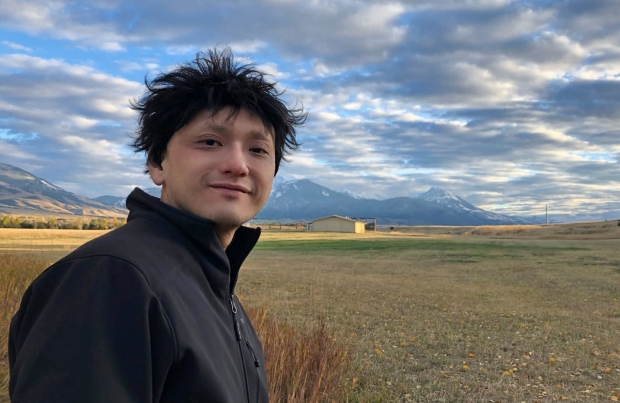
Chuck Chan on a road trip to Yellowstone National Park. Wan-Jun Lu
Charles “Chuck” Kwok Fai Chan, PhD, an assistant professor of surgery at Stanford Medicine, died March 12 at Stanford Hospital surrounded by his wife, parents, siblings, and some of his dearest friends and colleagues. He was 48.
“Chuck accomplished a great deal in the short time he had,” said Lloyd Minor , MD, dean of the Stanford School of Medicine and vice president for medical affairs at Stanford University. “He knew he was working against the clock, which drove him to persevere in his research. He leaves behind a wealth of foundational stem cell discoveries that will inform the future of rejuvenative medicine. Stanford Medicine mourns the loss of such a talented researcher at such an early age.”
A member of the Stanford Institute for Stem Cell Biology and Regenerative Medicine , Chan discovered the mouse and human stem cells that give rise to bone, cartilage and some types of cells that nurture blood-forming stem and progenitor cells. These stem cells are integral to developing new healing technologies for joints affected by osteoarthritis or skeletal injuries.
“Chan was an outstanding scientist with a prodigious intellect and curiosity. He was a giant in the field who we lost way too early,” said Michael Longaker , MD, a professor of plastic and reconstructive surgery and the Deane P. and Louise Mitchell Professor in the School of Medicine. “His work will have a long-lived impact. Decades from now, millions of people with arthritis may be benefiting from his discoveries, and I will say, ‘This work traces back to the Chan lab.’”
Chan trained many young scientists, including undergraduates, CIRM scholars and international students. His colleagues said he was generous with his time, ideas and the secret recipes used in his experiments. He believed there were always more discoveries to make and more Nature papers to write.
“He was very confident that there was enough science to go around. He was so willing to share, to talk about science, to collaborate because he was confident that there was so much still to discover,” said his brother Ed Chan , a researcher in the plastic and reconstructive surgery department at Stanford Medicine. “He was very open with his science, pushing his teams to present their research and share what they discovered and the new tools they developed.”
Chan identified and isolated essential components needed to encourage the development of skeletal stem cells, which can make bone, cartilage and helper cells for blood-cell precursors. To bring these findings to the clinic, he dabbled in gene editing and even a project using microneedle-based technologies for repairing cartilage with his brother.
“He was a brilliant young scientist, unafraid to explore new technology,” said Irving Weissman , MD, founding director of the Stanford Institute of Stem Cell Biology and Regenerative Medicine, professor of pathology and developmental biology, and the Virginia and D.K. Ludwig Professor in Clinical Investigation in Cancer Research. “Though he didn’t treat patients, he was always thinking about how they’d benefit from his discoveries. We will miss his drive, his empathy, his deep intelligence. Sadly, generations of patients will miss his potential discoveries.”
Boundless curiosity, unrestrained imagination
When he applied to Stanford Medicine’s graduate program, Chan wrote in his personal statement, “If I cannot be a child, then let me be a scientist…scientists have boundless curiosity and an unrestrained imagination.” It was a definition Chan embodied his entire life, friends and family say.
Though he didn’t treat patients, he was always thinking about how they’d benefit from his discoveries.
Born May 14, 1975, in Hong Kong, Chan moved to the U.S. in early 1982, landing in Anaheim, California, where he could see Disneyland’s famous fireworks displays from his living room window. He was the eldest of six siblings — he had four brothers and one sister. His mother is a homemaker, and his father was in the photographic equipment business during his youth.
“Chuck was the leader of our gang. He was No. 1,” Ed Chan said. “He was always into science — he had a big rock collection; he was into bugs and how the ecosystem works. As a family, we used to laugh at him a bit for his obsessions.”
He attended Alhambra High School, where he played clarinet in the marching band. He started his research career in high school, interning at university labs over the summer.
He earned a bachelor’s degree in molecular biology from the University of California, Berkeley, in 1999, staying on for two years to complete a research project and publish his work. In 2002, he enrolled in the development biology program at Stanford Medicine, joiningWeissman’s lab, where he focused on finding and defining interactions between stem cells that lead to regenerative growth. He earned his PhD in 2011.
“He explored many things and proved himself to be absolutely fearless in terms of technologies that might advance the field,” Weissman said.
As a graduate student, Chan was diagnosed with non-Hodgkin’s lymphoma and underwent extensive treatments. “During that time, he did not stop doing science,” said his wife, Wan-Jin Lu, PhD, a research scientist at the Stanford Institute for Stem Cell Biology and Regenerative Medicine . “He managed to publish a paper, defend his thesis, attend lab meetings and support his lab mates.”
Eventually, a bone marrow transplant from his sister gave him an eight-year remission. He was awarded with an independent Siebel Scholar position and built up his lab immediately after earning his PhD. His work focused on the stem cells that give rise to bones and cartilage.
“Anyone else might have been demoralized by how hard these experiments were. But Chuck seemed like he couldn’t get enough of it,” Longaker said. “That’s what made him a unique and uber-successful scientist.”
Chan worked doggedly to identify the mouse skeletal stem cell , which gives rise to the spongy bone that supports blood, hard bone and cartilage.
“Irv said these experiments would not work, but Chuck did not listen. He went ahead and tried it anyway,” Lu said. Eventually, he grew a piece of bone with a spongey inside and cartilage at the ends. “He was so proud of himself that he brought the bone straight into Irv’s office — it was his once-in-a-lifetime ‘Eureka’ moment that every scientist dreams about.”
Weissman added, “One of the unique aspects of helping great graduate students is that they discover what you doubted.”
That work was published in the top journal Cell and immediately put him on the map as a “researcher to follow,” Longaker said. Very quickly after that, he identified the human skeletal stem cell, again publishing the finding in Cell .
“He became this iconic bone biology person early in his career — it was a testament to his vision for what’s possible,” Longaker said. “He went on to regenerate cartilage and reverse the slow healing of aging.”
When joint cartilage has worn away, bone painfully rubs against bone. Often, a patient’s only solution is pain medication or joint replacement surgery. Chan’s research may lead to ways to regrow cartilage.
“Because he had overcome so much with his health as a grad student, I think it gave him a sense of urgency in his work,” Longaker said. “He wasn’t on faculty long. But wow, his contributions will live forever.”
A lasting impression
Not only was Chan a dedicated scientist; he was an optimist inside and outside the lab — an upbeat person always happy to collaborate, colleagues said. He was also a well-known night owl, sending texts from the lab at all hours.
In the lab, Chuck was in his element. That was what he wanted to do with the people he wanted to do it with.
He took an unusual approach to picking his projects. He pursued the fundamental questions, pushing through ideas at an unusually fast rate. He conducted one experiment, focusing on one question, to decide if that project would work. If not, the next week, he would start a new project.
“He didn’t work on small projects. He wanted to make a difference,” Longaker said. “He was undaunted; no matter how complicated the experiment, he did whatever it took — that’s what made him unique.”
Chan was also a good mentor and group leader. “If someone was having a bad day, they would come to Chuck’s lab. They’d have a few beers, and he would help them through it. He would sit with you and inspire you,” Lu said.
Chan spent about 90% of his time talking about, thinking about or conducting lab work, Lu said.
“The idea of work-life balance wasn’t his focus. It’s work and life, they’re just together,” Ed Chan said. “In the lab, Chuck was in his element. That was what he wanted to do with the people he wanted to do it with.”
Outside the lab, Chuck found a profound connection with Hawaiian culture during a weeklong camping trip along the Maui coastline. This experience ignited a love for the Aloha spirit and the Hawaiian way of life. He was often seen in Hawaiian shirts, spending time at the beach and hiking the island trails. Chuck had a particular fondness for sea turtles, always seizing the chance to seek them out along the sandy shores.
When it came to his family, Chuck was the sterner older brother, Ed said. He pushed his younger siblings hard when they were younger, prepping them to take the SATs by having his siblings live with him for the summer and drilling them every day. “They hated it. But to this day, they all admit that they got into decent schools because Chuck was riding them so hard,”Ed Chan said.
Chan received a Siebel Scholarship Award from 2011 to 2013, a Prostate Cancer Foundation Young Investigator Award from 2013 to 2016, a National Institutes of Health Pathway to Independence Award from 2015 to 2020, and an American Federation for Aging Research and Arthritis National Foundation grant in 2018 and 2020.
Chan is survived by his wife, Wan-Jin Lu, of Redwood City, California; parents Albert and Anna Chan; and his five siblings: Edward Chan, Andrew Chan, Marvin Chan, Brian Chan and Karen Haas. He has nine nephews and nieces.
- Jennifer Welsh Jennifer Welsh is a freelance writer
About Stanford Medicine
Stanford Medicine is an integrated academic health system comprising the Stanford School of Medicine and adult and pediatric health care delivery systems. Together, they harness the full potential of biomedicine through collaborative research, education and clinical care for patients. For more information, please visit med.stanford.edu .
Artificial intelligence
Exploring ways AI is applied to health care

100 Best universities for Mechanical Engineering in Russia
Updated: February 29, 2024
- Art & Design
- Computer Science
- Engineering
- Environmental Science
- Liberal Arts & Social Sciences
- Mathematics
Below is a list of best universities in Russia ranked based on their research performance in Mechanical Engineering. A graph of 714K citations received by 136K academic papers made by 158 universities in Russia was used to calculate publications' ratings, which then were adjusted for release dates and added to final scores.
We don't distinguish between undergraduate and graduate programs nor do we adjust for current majors offered. You can find information about granted degrees on a university page but always double-check with the university website.
1. Moscow State University
For Mechanical Engineering
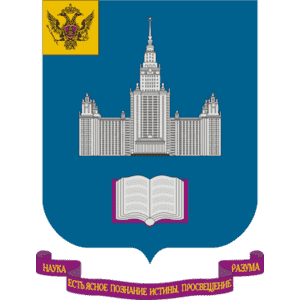
2. Tomsk State University

3. St. Petersburg State University

4. Bauman Moscow State Technical University


5. Ufa State Aviation Technical University

6. Peter the Great St.Petersburg Polytechnic University

7. Tomsk Polytechnic University

8. Ural Federal University

9. South Ural State University

10. National Research University Higher School of Economics

11. Moscow Aviation Institute

12. Novosibirsk State University

13. ITMO University

14. N.R.U. Moscow Power Engineering Institute

15. National Research Nuclear University MEPI

16. Kazan Federal University
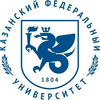
17. National University of Science and Technology "MISIS"

18. Moscow Institute of Physics and Technology

19. Samara National Research University

20. Moscow State Technological University "Stankin"

21. Novosibirsk State Technical University
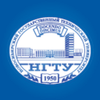
22. RUDN University
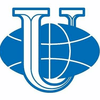
23. Southern Federal University
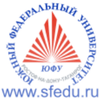
24. Saratov State University

25. Ufa State Petroleum Technological University
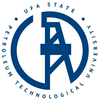
26. Samara State Technical University

27. Siberian Federal University

28. Kazan National Research Technical University named after A.N. Tupolev - KAI

29. Perm State Technical University

30. Omsk State Technical University
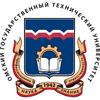
31. Saint Petersburg State Electrotechnical University
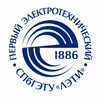
32. Moscow Polytech

33. Saint-Petersburg Mining University

34. Magnitogorsk State Technical University
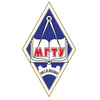
35. Saratov State Technical University
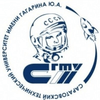
36. Moscow State University of Railway Engineering

37. Lobachevsky State University of Nizhni Novgorod

38. Nizhny Novgorod State Technical University

39. Tula State University

40. Belgorod State Technological University

41. Far Eastern Federal University
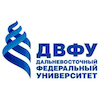
42. Novgorod State University
43. belgorod state university.

44. Finance Academy under the Government of the Russian Federation

45. Moscow Medical Academy
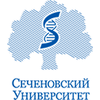
46. Kazan State Technological University
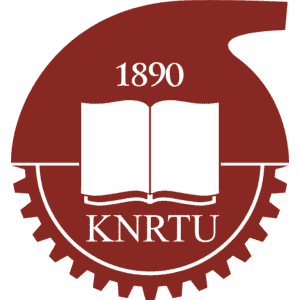
47. Russian State University of Oil and Gas
48. siberian state aerospace university.

49. Tambov State Technical University

50. Voronezh State University

51. Siberian State Industrial University
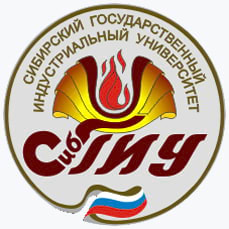
52. Saint Petersburg State Institute of Technology

53. Kalashnikov Izhevsk State Technical University
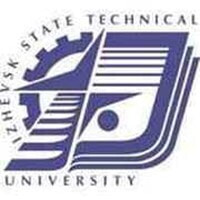
54. St. Petersburg State University of Architecture and Civil Engineering

55. Mendeleev University of Chemical Technology of Russia
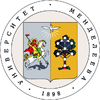
56. Murmansk State Technical University

57. South-Western State University

58. Ogarev Mordovia State University

59. Tomsk State University of Control Systems and Radioelectronics
60. south-russian state university of economics and service.

61. Perm State University
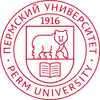
62. Kuzbass State Technical University

63. Russian National Research Medical University

64. Plekhanov Russian University of Economics

65. Ulyanovsk State Technical University

66. Ulyanovsk State University
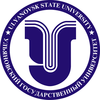
67. Penza State University
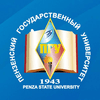
68. Kuban State University of Technology

69. Polzunov Altai State Technical University
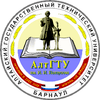
70. Chelyabinsk State University

71. Yaroslavl State University
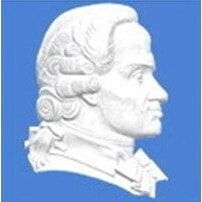
72. University of Tyumen

73. National Research University of Electronic Technology

74. Leningrad State University

75. Moscow State Pedagogical University
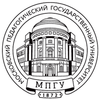
76. Udmurt State University
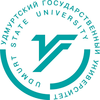
77. Irkutsk State University
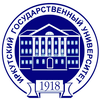
78. North-Eastern Federal University

79. Bashkir State University
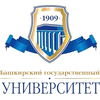
80. Russian Presidential Academy of National Economy and Public Administration
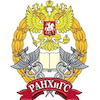
81. Kuban State University
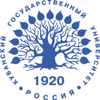
82. Kuban State Agricultural University

83. St. Petersburg State University of Aerospace Instrumentation

84. Kemerovo State University
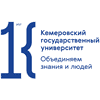
85. Immanuel Kant Baltic Federal University

86. Orenburg State University

87. Baltic State Technical University "Voenmeh"

88. Tomsk State University of Architecture and Building
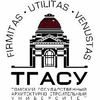
89. Chuvash State University
90. ivanovo state power university.

91. Irkutsk National Research Technical University

92. Orel State University

93. State University of Management

94. Tomsk State Pedagogical University
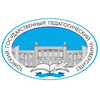
95. Volgograd State University

96. Petrozavodsk State University
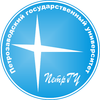
97. Tver State University
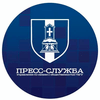
98. Northern Arctic Federal University

99. Omsk State Transport University

100. Kaliningrad State Technical University

The best cities to study Mechanical Engineering in Russia based on the number of universities and their ranks are Moscow , Tomsk , Saint Petersburg , and Ufa .
Engineering subfields in Russia

IMAGES
VIDEO
COMMENTS
A Doctor of Philosophy (PhD, Ph.D., or DPhil; Latin: philosophiae doctor or doctor philosophiae) is the most common degree at the highest academic level, awarded following a course of study and research. The degree is abbreviated PhD and sometimes, especially in the U.S., as Ph.D. It is derived from the Latin Philosophiae Doctor, pronounced as three separate letters (/ p iː eɪ tʃ ˈ d iː ...
PhD stands for Doctor of Philosophy. This is one of the highest level academic degrees that can be awarded. PhD is an abbreviation of the Latin term (Ph)ilosophiae (D)octor. Traditionally the term 'philosophy' does not refer to the subject but its original Greek meaning which roughly translates to 'lover of wisdom'.
A Doctor of Philosophy, often known as a PhD, is a terminal degree —or the highest possible academic degree you can earn in a subject. While PhD programs (or doctorate programs) are often structured to take between four and five years, some graduate students may take longer as they balance the responsibilities of coursework, original research ...
A PhD is a terminal academic degree students typically pursue when they're interested in an academic or research career. A PhD is the highest possible academic degree a student can obtain. PhD stands for "Doctor of Philosophy," which refers to the immense knowledge a student gains when earning the degree. While you can actually get a PhD in ...
Definition of a PhD - A Doctor of Philosophy (commonly abbreviated to PhD, Ph.D or a DPhil) is a university research degree awarded from across a broad range of academic disciplines; in most countries, it is a terminal degree, i.e. the highest academic degree possible. PhDs differ from undergraduate and master's degrees in that PhDs are ...
The Harvard Ph.D. in Education trains cutting-edge researchers who work across disciplines to generate knowledge and translate discoveries into transformative policy and practice. Offered jointly by the Harvard Graduate School of Education and the Harvard Kenneth C. Griffin Graduate School of Arts and Sciences, the Ph.D. in Education provides ...
PhD is short for Doctor of Philosophy. This is an academic or professional degree that, in most countries, qualifies the degree holder to teach their chosen subject at university level or to work in a specialized position in their chosen field. The word 'philosophy' comes from the Ancient Greek philosophia, literally translated as 'love ...
The PhD programs advance scientific discovery by training and supporting students doing in-depth research that solves the world's biggest public health challenges. At the forefront of efforts to benefit the health of people worldwide, the School offers students the opportunity to join in shaping new ideas in public health and implementing ...
The meaning of PHD is the academic degree, title, or rank of doctor of philosophy; also : a person who has earned the academic degree of doctor of philosophy. How to use PhD in a sentence.
The PhD program in Health Policy (Management) prepares students to effect powerful change rooted in data-driven research on the managerial, operational, and strategic issues facing a wide range of organizations. Coursework includes the study of microeconomics theory, management, research methods, and statistics.
A Doctor of Philosophy ( PhD, Ph.D., or DPhil; Latin: philosophiae doctor or doctor philosophiae) is the most common degree at the highest academic level, awarded following a course of study and research. The degree is abbreviated PhD and sometimes, especially in the U.S., as Ph.D. It is derived from the Latin Philosophiae Doctor, pronounced as ...
A PhD, which is short for philosophiae doctor (doctor of philosophy in Latin), is the highest university degree that can be obtained. In a PhD, students spend 3-5 years writing a dissertation, which aims to make a significant, original contribution to current knowledge. A PhD is intended to prepare students for a career as a researcher ...
How the PhD Program Works. Completing your doctorate at Wharton requires 5 years of full-time study. The first 2 years in the program prepare you for admission to candidacy by taking courses, qualifying exams, and starting research projects. In the last few years, you are primarily conducting research full-time including writing and defending ...
The PhD degree is awarded by the University of California as the mark of highest achievement in preparation for active scholarship and research in an academic discipline. A holder of the PhD degree possesses knowledge of a broad field of learning and has presented a dissertation containing an original contribution to the chosen field of study.
Non-Clinical PhD studentships for informatics and data science researchers. Apply today to start your PhD in Quantum Technology at The University of Glasgow. Three 3-year PhD Funded Studentships in the School of Medicine. PhD & postgraduate research degrees at the University of Strathclyde.
The PhD, also known as the Doctor of Philosophy, is a research degree, which is one of the most common types of doctoral degrees, and is awarded to graduates in many different fields. For those asking, "Is a PhD higher than a doctorate?" the answer is simple: no. A PhD lies within the doctorate category, so one is not better than the other.
Our PhD program is designed to equip graduates with the knowledge and skills in theoretical, methodological, and analytical approaches needed to conduct research and apply knowledge in the fields of nursing science and healthcare. At GW Nursing, we specialize in sixteen areas of expertise, and our students have access to world-renowned nursing ...
For more than 27 years, The PhD Project has helped change the future workforce by providing historically underrepresented students a model of achievement and businesses a powerful way to enrich the talent pipeline. We support the creation of business PhDs from historically underrepresented groups - transforming business education and business
Jessica Paige, PhD: Social Scientist at RAND; Paul Schwerda, PhD: Investment Manager at Baillie Gifford; Roger Vargas, PhD: Computational Scientist at Moderna; Quotes from Attendees: "As an upper-level PhD student, the seminar provided valuable information and insights on careers outside of academia.
About us. We were formed in 2018 by a University of Connecticut Biomedical Sciences PhD candidate and a postdoctoral fellow to provide resources for students on non-academic, industry, and academic positions within Biomedical Science. Transitions to virtual programming enabled us to create an online presence for all students interested in ...
The Director of the Women and Addictive Disorders Core within Women's Health Research at Yale Marc Potenza, MD, PhD, has been named the inaugural Steven M. Southwick Professor of Psychiatry. Named professorships are among the highest honors Yale bestows on its faculty. At the time of his death in 2022, Southwick was the Glenn H. Greenberg ...
Editor's note: This story is part of a series of profiles of notable spring 2024 graduates. In the face of the current climate crisis, scientists, scholars, lawmakers and corporations in the U.S. and worldwide are speeding up the shift to renewable energy systems and decarbonization.. This spring, as a graduate from Arizona State University's College of Global Futures with a PhD in ...
Northwestern University Feinberg School of Medicine is home to a team of premier faculty and staff biostatisticians who are a driving force of data analytic innovation and excellence. In this episode, Denise Scholtens, PhD, a leader in biostatistics at Feinberg, discusses the growing importance of the field of biostatistics and how she leverages her skills to collaborate on several projects in ...
The following three PhD programs are based at the Harvard T.H. Chan School of Public Health, designed for students seeking specialized scientific and technical expertise to propel an academic or research career: PhD in Biological Sciences in Public Health. PhD in Biostatistics. PhD in Population Health Sciences.
Both in her roles as a head and neck cancer researcher and associate director of the Office of Equity, Diversity, and Inclusion for Duke Cancer Institute, Tammara Watts MD, PhD, has made it her mission to address cancer disparities and diversify the oncology workforce. A nearly $2 million grant she recently received from the National Institutes of Health will help her do just that.
Hana Taylor Schlitz (L & R) is set to become the youngest graduate in the history of Texas Woman's University, in May 2024. According to the World Health Organization, TB is one of the top 10 ...
Physics in Medicine and Biology 2013;58:6337-6353. Giantsoudi D, Grassberger C, Craft D, Niemierko A, Trofimov A, Paganetti H. Linear energy transfer (LET)-Guided Optimization in intensity modulated proton therapy (IMPT): feasibility study and clinical potential.
As a graduate student, Chan was diagnosed with non-Hodgkin's lymphoma and underwent extensive treatments. "During that time, he did not stop doing science," said his wife, Wan-Jin Lu, PhD, a research scientist at the Stanford Institute for Stem Cell Biology and Regenerative Medicine. "He managed to publish a paper, defend his thesis ...
EduRank.org is an independent metric-based ranking of 14,131 universities from 183 countries. We utilize the world's largest scholarly papers database with 98,302,198 scientific publications and 2,149,512,106 citations to rank universities across 246 research topics.
More than 900 samples of gray forest soils were analyzed. In the profile of soils possessing the second humus horizon (SHH), the highest carbon content (3.0%) was found in the plow layer.